Vernon Yates Wildlife Rescue and Rehab
Vernon Yates in Seminole, FL 5/19/2022 for threatening a USDA inspector. USDA Report
Wildlife Rescue & Rehabilitation, Inc. is a pseudo-sanctuary based in the suburban Seminole, Florida backyard of Vernon Yates, a freelance wildlife trapper, rehabilitator and exotic animal owner. Yates is a junior-high dropout and former electrician with no formal education in wildlife or animal care. His one-man nonprofit was founded in 1980 “for tax purposes” as a spinoff from his previous business of breeding raccoons for the exotic pet trade.
Vernon Yates has a history of serious Animal Welfare Act violations, reckless endangerment of the public, and as of 2011 has failed to post the legally-mandated $10,000 bond required by the state of Florida for all owners of dangerous exotics. Despite this, the Florida Wildlife Commission (FWC) continues to renew his permits and frequently dumps confiscated exotic pets on his property because he agrees to take anything they give him.
News articles cite Yates owned 34 big cats in 2012 and 17 tigers in 2014. The current accurate number of big cats he owns is unknown. He warehouses the big cats in rows of barren concrete-floored pens on his 2.5 acre residential property — located across the street from an elementary school. Because his facility is grandfathered in, he does not have to meet even the minimum 5 acre property size required to legally house big cats in Florida.
Wildlife Rescue and Rehabilitation is generally not open to the public, but photos and videos taken by the press show the dismal conditions Yates’ animals live in. This 2018 video filmed in Yates’ backyard shows a tiger walking with an obvious limp, and a 2017 video filmed by a neighbor shows the rows of chain-link pens on the property. One of the cages contains a black bear repeatedly swinging his head back and forth, a stereotypical behavior which indicates psychological distress and poor welfare.
Click the images to see larger. Click back button to come back to page.
- Small barren cages and sad looking animals in Vernon’t Yates back yard.

The pickup truck which Vernon Yates uses to transport and display tigers for profit.
On February 18 2019, local news station WFLA visited Vernon Yates’ backyard menagerie as part of a story on dangerous captive wildlife living in residential areas of Tampa. The story described his home and property as “more like a zoo, filled with some of the most exotic and in some cases, dangerous animals that you’ll find anywhere.” Yates told reporters “I still look at everything here, whether it be the tigers, the bears, or whatever as they’re my pets.” News footage from the story shows tigers housed in rows of concrete-floored, chain-link pens, a “pet” baboon alone in a cage in the front yard, and an alligator in a filthy concrete pool.
On March 15 2018, WFLA camera crews visiting Yates’ property filmed the same baboon housed alone and engaging in stereotypical behavior and four black bears crammed into a single small concrete pen.
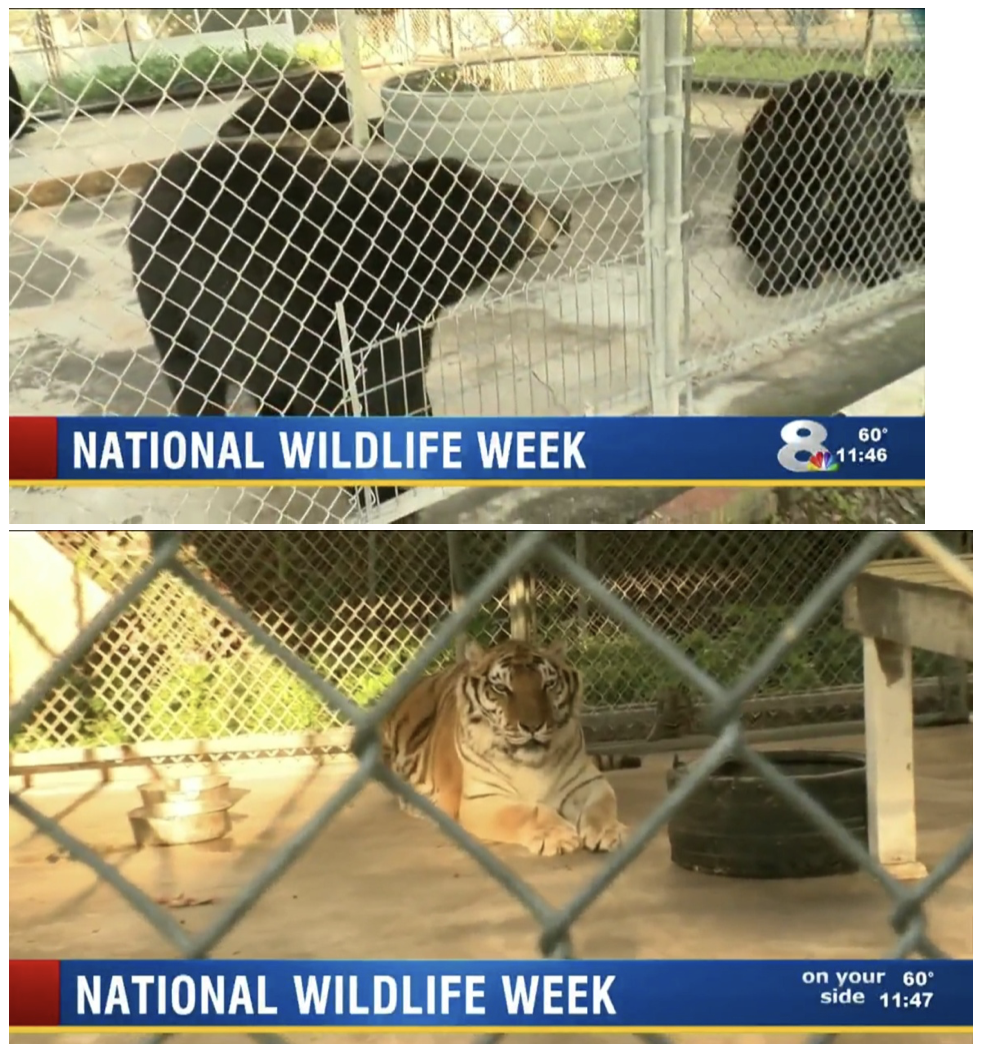
Wildlife Rescue and Rehabilitation does many things which no responsible sanctuary would ever do:
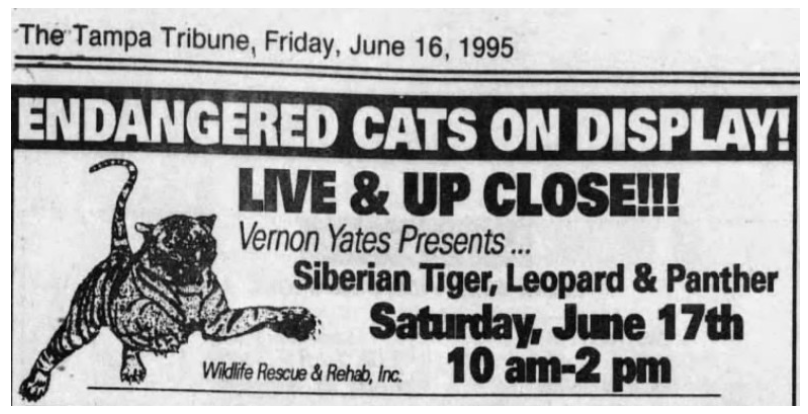 Yates regularly hauls his tigers to parties, schools, nightclubs, and sweltering parking lots in the back of his pickup truck and displays them in tiny transport cages for $250 an hour. The public is led to believe that these cats were “rescued from certain death,” but news reports confirm that the tigers most frequently exhibited by Wildlife Rescue and Rehabilitation were born in Yates’ backyard and are the offspring of big cats Yates acquired from Robert Baudy’s irresponsible breeding mill as newborn cubs. Legitimate sanctuaries do not exhibit big cats offsite because it’s disrespectful to the animal, sends the wrong message to the public, and because there is no way to ensure the safety of the cat or the public in such situations.
Yates regularly hauls his tigers to parties, schools, nightclubs, and sweltering parking lots in the back of his pickup truck and displays them in tiny transport cages for $250 an hour. The public is led to believe that these cats were “rescued from certain death,” but news reports confirm that the tigers most frequently exhibited by Wildlife Rescue and Rehabilitation were born in Yates’ backyard and are the offspring of big cats Yates acquired from Robert Baudy’s irresponsible breeding mill as newborn cubs. Legitimate sanctuaries do not exhibit big cats offsite because it’s disrespectful to the animal, sends the wrong message to the public, and because there is no way to ensure the safety of the cat or the public in such situations.
In response to criticism, Yates has told the Tampa Tribune that “one of my biggest aggravations is the jerk who stands 20 feet back from the cage and says what a shame it is that my animals are in cages.”
This tiger is being used as a trade show prop to sell insecticides:
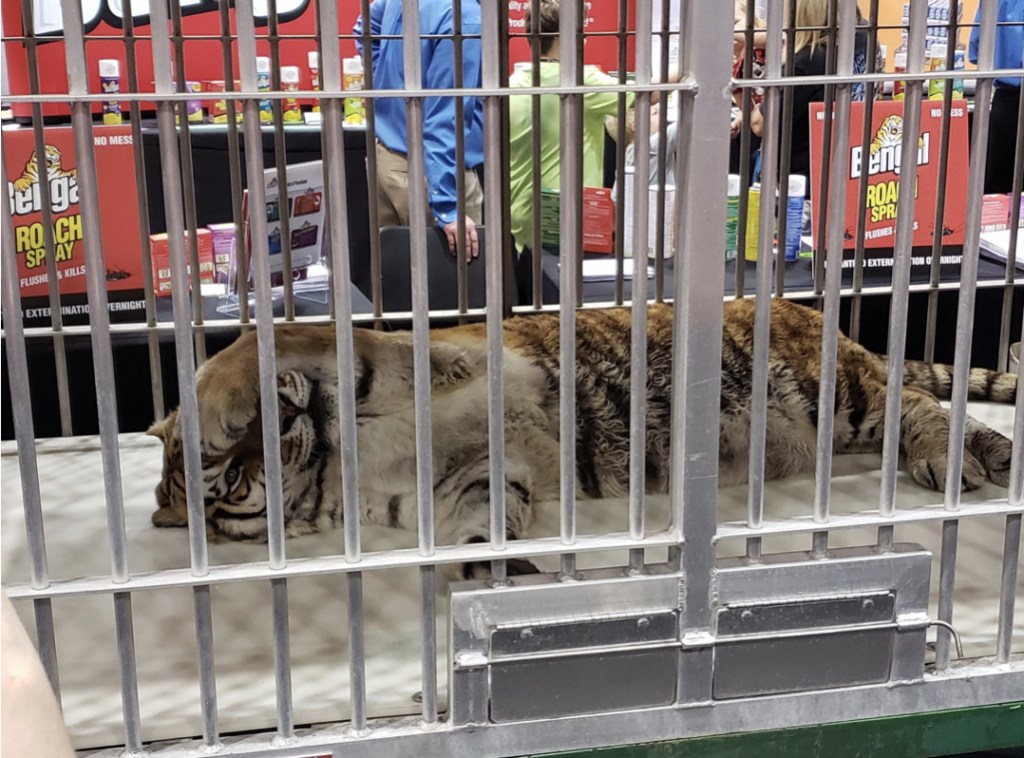
Here, Vernon Yates sets a reckless example by sticking his arm in the cage and petting the tiger while the public watches:

In 2012, Yates rented out two caged tigers to a noisy nightclub for use as living photo props, where they were harassed by drunken patrons.
These tigers were exhibited in circus wagons in the Petland parking lot on a 95 degree day:
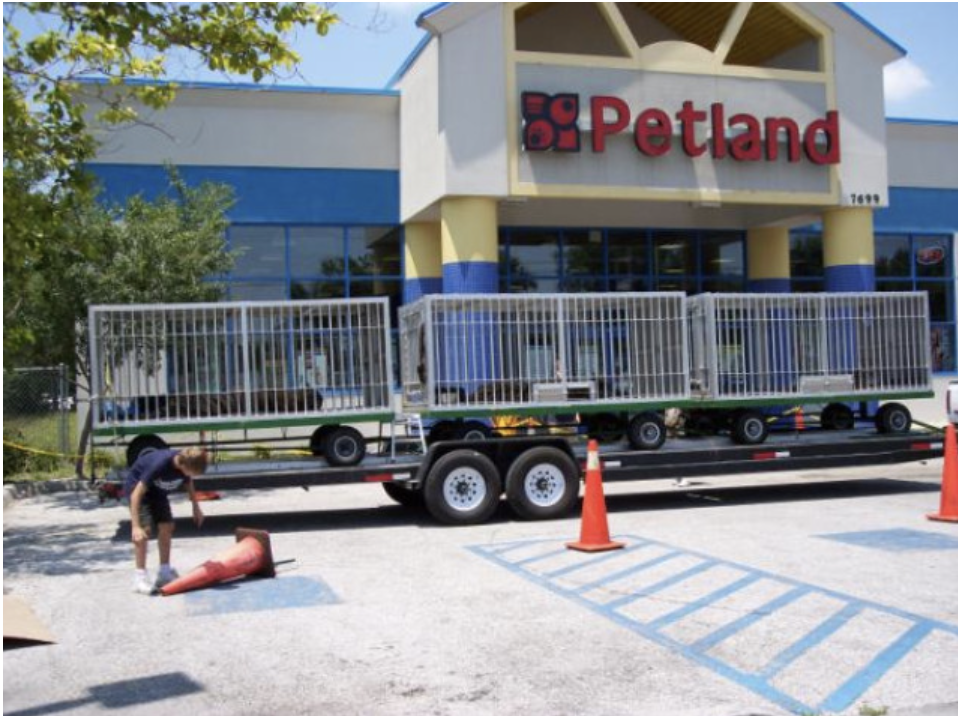
Even cubs are displayed in tiny cages not much bigger than their bodies.

Wildlife Rescue and Rehabilitation even advertises on a birthday party rental website, encouraging people to bring “a real live Tiger or Bear to your birthday party!”

No real sanctuary disrespects their animals by renting them out as party props.
Yates regularly “rehomes” rescued or confiscated animals to other private owners, which risks putting the animals in situations just as bad – if not worse — than the places the animals came from. Yates is confirmed to have sold two white tiger cubs to the notoriously cruel Dade City’s Wild Things, where one of the cubs died within a year.
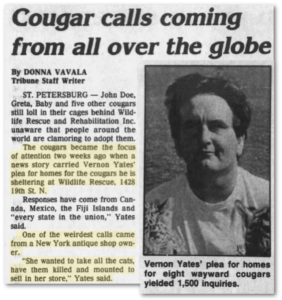 And the Tampa Bay Times reported that after seeking homes for eight rescued cougars, Yates received over 1500 inquiries, including one from a New York antique shop owner who ”wanted to take all the cats, have them killed and mounted to sell in her store.” Legitimate sanctuaries never buy, sell, trade, or give away animals.
And the Tampa Bay Times reported that after seeking homes for eight rescued cougars, Yates received over 1500 inquiries, including one from a New York antique shop owner who ”wanted to take all the cats, have them killed and mounted to sell in her store.” Legitimate sanctuaries never buy, sell, trade, or give away animals.
- True sanctuaries provide prompt, professional veterinary care, but Vernon Yates has been cited by the USDA for failing to do so.
In 1992, federal inspectors cited Wildlife Rescue and Rehabilitation multiple times for having “no evidence of veterinary care for injured or sick rehab animals.”
In 2002, a tigress named Song was not treated for four broken canine teeth until they became painfully infected, causing her to rapidly lose weight. Later that year, the USDA cited Yates for having no records of veterinary care for a tigress which had repetitively sucked on the end of her tail until it was red and raw.
In 2014, a tiger named Ty refused food for two weeks and lost 100 pounds before being taken to a veterinarian to have a 4-pound gastric obstruction surgically removed. When Ty was finally taken to the vet, news footage shows Vernon Yates engaging in jaw-dropping recklessness by opening the unsedated tiger’s cage in the Clearwater BluePearl parking lot while press and staff crowd around.
Yates stands there nonchalantly as the completely unrestrained 600-pound tiger paces and briefly attempts to walk out into the parking lot. He then physically crawls into the still-open cage himself to inject Ty with the sedative. This incredibly foolish stunt endangered the life of the tiger, the public, and the veterinary staff.
- True sanctuaries do not allow any direct contact between people and big cats, but Vernon Yates recklessly and illegally allows members of the public to pet, feed, pose with, and even be licked on the hand by his 600 pound tiger.
Not only is this incredibly dangerous, it’s also a serious violation of federal USDA regulations prohibiting direct contact between the public and big cats over the age of 12 weeks. A November 2018 news article about a “Blessing of the Animals” service at a local church wrote that the service was attended by “Ty, a caged 650-pound Siberian tiger brought by Vernon Yates of Wildlife Rescue and Rehabilitation, who licked Fr. Whitley’s outstretched hand.”
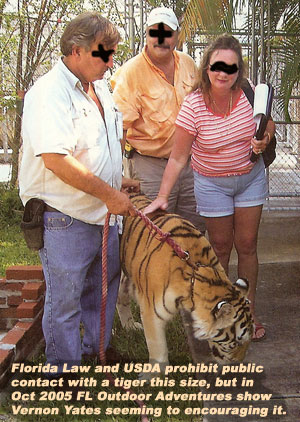
Yates invited the woman to come to his backyard, where he illegally allowed her to pet and pose with “Ty,” his adult Siberian tiger.
Repeatedly, the same tiger is caged and put on display at the woman’s car shows. These photos from 2017 show Yates violating federal law by exhibiting the tiger with no barrier and recklessly allowing members of the public to feed the tiger, stick their hands in the cage to be licked, and even to go inside the cage while the cat was sleeping “to take a picture.”
- True sanctuaries try to provide their animals with as natural of an environment as possible, but on Wildlife Rescue and Rehabilitation’s former website, Yates openly boasted that “our animals live in chain link cages with concrete floors.”
Concrete is a completely inappropriate substrate for big cats because it leads to health issues such as foot and joint problems, ulcerated foot pads, and overall poor health. The Global Federation of Animal Sanctuaries, which accredits the best sanctuaries, requires members to provide natural substrates for outdoor big cat enclosures, and the AZA notes that “In general, natural outdoor dirt substrates are recommended for tiger exhibits… [concrete] by itself is not recommended due to its porosity, abrasiveness, and hardness. If the surface is too hard (e.g., concrete), trauma to bony prominences in normal resting or sleeping positions can result.”
This photo from 2017 shows hair loss and pressure sores on the elbows of “Ty” the tiger. These lesions are caused by the repeated trauma of lying on concrete and may lead to infection if untreated.
- True sanctuaries spay/neuter their animals to prevent breeding, but Vernon Yates allows his big cats to produce cubs “by accident” year after year.
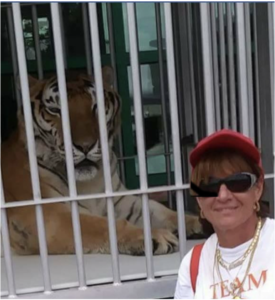 Some of Yates’ cubs have been sold to abusive roadside zoos, some are kept by Yates as his own private “pets,” and some have been born with such severe genetic defects due to inbreeding that they did not survive for more than a few weeks after birth.
Some of Yates’ cubs have been sold to abusive roadside zoos, some are kept by Yates as his own private “pets,” and some have been born with such severe genetic defects due to inbreeding that they did not survive for more than a few weeks after birth.
In 2001, Yates told the St. Petersburg Times that “twice in a year, they have had litters of cubs unexpectedly, which he acknowledges shouldn’t have happened.” Yates claimed that he would get his cats spayed and neutered, but he clearly has not done so because cubs continue to be born in his backyard.
In 2009, two tiger cubs named Chester and Fabian were born at Wildlife Rescue and Rehab with such severe birth defects that they were missing the roof of their mouths. Despite the efforts of compassionate veterinarians to save them, Chester, a white tiger, died after aspirating on formula, and Fabian, a “golden tabby” tiger, was euthanized approximately seven weeks later after a deformed section of his esophagus ruptured and became infected, causing formula to flood into his lungs. Fabian was also being treated for many other health problems including an eye infection, deformed jaw, torn cardiac tissue, and a twisted left leg. Yates claimed that the cubs’ birth was a “surprise.”

In this 2006 photo, local teenagers pet and play with “Yogi,” an 11 week old cub which Yates brought to the San Antonio, FL Rattlesnake Festival. Walking cute cubs on leashes in front of the public only stimulates the trade in tigers as pets, which almost never works out well for the tiger or the owner.
- True sanctuaries are working to end the private trade in big cats, but Vernon Yates openly advocates for the ownership of tigers as pets, writing on his Wildlife Rescue and Rehabilitation website that “it is everyone’s right to possess, love and take care of exotic animals.”
Yates has protested Big Cat Rescue’s efforts to end the private ownership of “pet” tigers with signs saying “save our pets” and consistently tells the press that he considers the tigers, bears, leopards, and other animals in his backyard to be his personal pets. When his neighbors complained about living next door to dangerous wildlife, Yates told the Tampa Bay Times, “I am entitled to have my pets here. Am I to be persecuted because I don’t have everyday dogs and cats?”
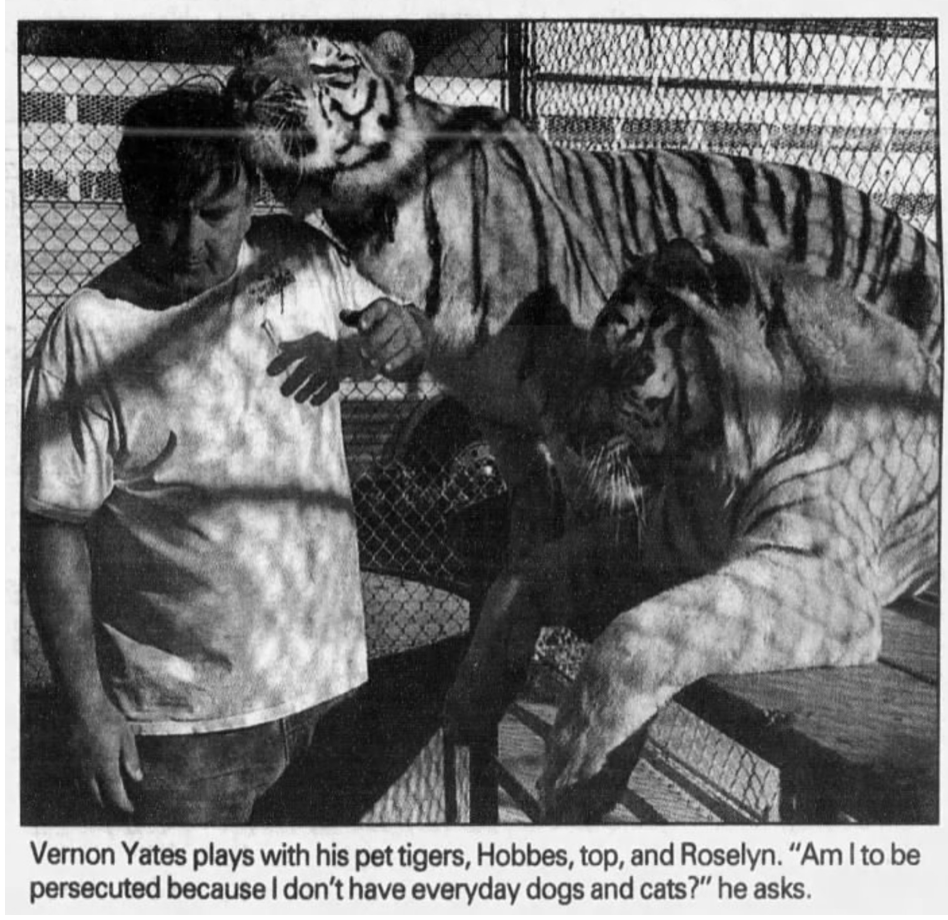
Vernon Yates was a speaker at a 2014 meeting of the Feline Conservation Federation, an alliance of private zoos and pet owners fighting against bans on the private breeding, trade, and ownership of big cats. In 2007, Yates lamented to the St. Petersburg Times, “I thought I would not see it in my lifetime, but I think it’s coming — any form of private ownership will be gone.”
Until 2012, Wildlife Rescue and Rehabilitation’s website contained links to the National Animal Interest Alliance, a lobbyist group which supports the private breeding and ownership of exotic animals, the exploitation of wild animals in circuses, and which promotes declawing and fur farming. NAIA fights against all new animal welfare legislation, including the Big Cat and Public Safety Act championed by legitimate sanctuaries, on the grounds that “the government should not base new laws on the values and ethics of uninformed citizens.”
- True sanctuaries put animals before profit, but Vernon Yates holds animals for ransom by refusing to return them to their owners until he is paid a large fee for his “services.”
In 1991, the owners of Sunken Gardens accused Yates of “bounty hunting” and “bird napping” after he refused to return an escaped Ground Hornbill until he was paid $500. According to the Tampa Bay Times, owner James Turner claimed that Yates and a Sunken Gardens employee cornered the bird together, but that Yates and a Wildlife Rescue and Rehabilitation employee snatched it out of the hands of the Sunken Gardens employee and drove away.
Yates ”is a pretty good-sized man,” Turner said. ”When two big guys go ahead and grab the bird, what are you going to do? My employee said he feared he would injure the bird, so he let it go.” Turner said Yates jeopardized the bird’s safety. He said Yates’ employee drove away with the bird through a rough field so fast that the bird “bounced all over the place” in its cage.
Yates insisted that Turner was lying and that he set the $500 return fee to punish him. Later, in a scene which the Times called “reminiscent of a Korean prisoner release at the 38th parallel,” Turner was forced to recite an apology to Yates and a professional mediator was hired to help transfer the bird back to his rightful owners.
In 2012, Yates refused to return an escaped pet parrot to her owner until he was paid over $500 in “storage fees.” According to Fox 13 News, a neighbor found Lucy the parrot and called Wildlife Rescue & Rehabilitation to pick her up. Yates then answered a lost pet ad placed by Lucy’s owner, saying that he had the parrot but he wanted his fee first.
“He said ‘You can be here by 5 o’clock and you can have $400,” recounted the owner. “And I said ‘What? $400 for what?’”
“We charge $100 initially for picking it up. We charge $25 a day for every day we have it,” [Yates] said.
The parrot’s owner, who could not afford the fee because her husband had just returned from deployment in Iraq, told the Tampa Bay Times that Yates was holding her bird “for ransom.” Yates claimed that the fee was “non-negotiable” and replied: “I want her to have her bird back. All she has to do is pay the money.”
In 2013, Yates refused to assist in the court-ordered transfer of two tigers and a leopard from his facility to Susan Pierce (who has since had her USDA license revoked for Animal Welfare Act violations). The animals had been placed in Yates’ custody by the FWC after being confiscated a year earlier from former Tarzan actor Steve Sipek, who had been keeping them as pets illegally. While Sipek battled with the courts over the cats, Yates cared for them at the state’s request.
After the litigation wrapped up, Yates demanded to be reimbursed $50,000 for the cats’ care. When the courts ruled that Yates was not entitled to compensation, he angrily refused to help transfer the animals, telling Bay News 9: “We’re not going to do it. They don’t want to pay us to do it. We’re not doing it.”

“Oko was no problem to load on Wednesday but Lepa and Bo were still under the effects of a sedation they were given sometime prior to our arrival. They would go from being aggressive to sleeping. It was impossible to load them into our transports. We were not allowed on the property so the cats were rolled outside the perimeter fence. We chose to roll them into my closed in trailer and lock ourselves in to carry out the moves. We made the decision after several hours that we had to come up with something else and started making calls for a vet to come and sedate the 2 tigers.
The facility vet was on the property and said he would sedate them but it would cost me $14,000. Yes, you read that right. We had no choice but to have the cats boarded at the facility for 24 hours so I could get my vet up from Palm City the next day. We were charged $325 for 24 hours. I was told I would need to be there at 4:00 p.m. and would only have 30 min. to sedate and load 2 cats. If it took longer it would cost $250 per hour starting with the first minute over the 30.
When we got there at 3:30, we immediately paid the $250 for the extra hour to insure the well being of the cats, the safety of the public and my staff. We sedated Lepa and transferred her to my transport and brought Bo in and the vet immediately realized that he was under the influence of some type of drug. She discussed this with the facility owner and he refused to give her the name of the drug. So this began the administering the sedation in small doses, waiting 10 – 20 minutes and then giving more in small doses. We all knew the danger for Bo’s life and were worried sick. We finally were able to get enough in him and move him to my transport. They were given the reversal at 5:30, which was the end of our time paid for.
The vet explained to the Sheriff’s department that she needed to monitor the cats for a while and to make sure we were on county property so we didn’t have to pay the facility for another hour of the facilities’ time.
The facility had stated we were not allowed on their property nor would they assist in any way. They had also contacted the media so with deputies, FWC, media and onlookers, there were 30-40 people around when the cats were brought out which added to their stress. Any of you who have experienced a drugged tiger knows the danger of moving them in that state. We are all very capable of moving cats safely and always patient with them and give them time to be moved stress free. [Yates] stated we were stupid and incompetent. Those are only words used by an individual who tried everything to make the move impossible.”
- True sanctuaries are respectful of animals, people, and the law, but Vernon Yates has a long history of flaunting regulations and being openly hostile towards anyone who disagrees with him.
 Yates frequently clashes with federal, state, and local government officials who attempt to regulate his menagerie, telling the press “If they think they can control me, they’re crazy. I’m not going to let anybody run my life.”
Yates frequently clashes with federal, state, and local government officials who attempt to regulate his menagerie, telling the press “If they think they can control me, they’re crazy. I’m not going to let anybody run my life.”
In 2012, Yates told a New York Times reporter “I love my country, but I hate my government.” The reporter noted that “among his many complaints was the attitude of the U.S.D.A. bureaucrats who inspect his menagerie. He filled me in on a protest he was planning. During the Republican convention, he’d take one of his tigers — 3 of the 17 at his house are personal pets — on his boat and just sit on the river in front of the convention center, with a sign condemning the U.S.D.A.”
In 2005, Yates got into a screaming match with Pinellas county Commissioner Ken Welch after he questioned Yates about a tiger which he was driving around the neighborhood in the back of his pickup truck.

The Tampa Bay Times reported that Yates burst into a meeting of county commissioners and “angrily confronted Welch about the phone call and comments the commissioner made in January.” Yates accused Welch of lying and demanded an apology for him and his tiger, who he claims “had a right to be where it was.” Yates also took issue with Pinellas animal services director Kenny Mitchell, who told commissioners he saw children coming up to Yates‘ truck at Bardmoor Shopping Center in Seminole and touching the tiger’s cage. http://www.pinellascounty.org/media/bcc022205/Results.htm
Throughout the mid-1990s, Yates was extremely threatening towards neighbors and county commissioners who were not happy with him bringing dozens of “pet” big cats to their residential neighborhood. “I know some of the neighbors out there are not welcoming me with open arms,” Yates said in 1993. “If they continue to hassle, I’ll start hassling back.”
In 1994, Yates told the press that he “will not tolerate opposition to his presence” and threatened anyone who complains about him that “their life had better have a halo around it because I’m going to come check (them) out.” Yates accused his neighbors of being “jealous” of the two snow leopards he was keeping in his home and claims to have reported neighbors who complained about him to the county’s zoning department in retaliation, warning that “people in glass houses should never throw stones…. …I don’t care to know what my next-door neighbor’s name is, but don’t mess with me.”
In 1997, Pinellas County issued several zoning violations to Yates for failing to raise livestock without proper permits, not having a 25-foot setback between his pens and his side property line, and not conducting his home-based business within county regulations. Yates had refused to comply with local zoning laws because he insisted that they did not apply to him, stating “I could put 9,000 tigers on this piece of property, and no one could do anything about it.”
When courts agreed with Yates and ruled that the county zoning officials had no authority to regulate exotic animals, Yates told the press: “I have had a great wrong done to me. I was right all along. I was innocent all along. But I was still persecuted. Now, I want someone to make it up to me. I was on the defensive before. Now, I’m on the offensive.”
 In 1990, The Tampa Bay Times reported that Yates had “briefly lost his license battling a state agency over a bobcat” and that “he has been in cursing matches with Ralph Heath, founder of the Sun-coast Seabird Sanctuary in Indian Shores, over who should pick up an injured animal.”
In 1990, The Tampa Bay Times reported that Yates had “briefly lost his license battling a state agency over a bobcat” and that “he has been in cursing matches with Ralph Heath, founder of the Sun-coast Seabird Sanctuary in Indian Shores, over who should pick up an injured animal.”
Vernon Yates also has a history of harassing and physically threatening the staff of legitimate sanctuaries fighting to protect big cats from exploitation. In 2005, he was banned from exhibiting at Get Rescued in Gulfport after physically attacking volunteers from Big Cat Rescue.
Later, at a 2005 meeting of the Florida Wildlife Commission, Yates followed Big Cat Rescue founder Carole Baskin into a meeting, screaming obscenities at her and waving his arms so wildly that two security officers jumped up and headed toward him, causing him to retreat to the parking lot.
At another Florida Wildlife Commission workgroup, Yates slipped up behind a demure Big Cat Rescue volunteer named Barbara Frank and shoved her aside in an attack on Carole Baskin. Yates was threatening and screaming obscenities at her so loudly that a circus owner, Lance Ramos, interceded in what ended up being a knock-down, drag out fight on the lawn of the civic center in order to protect the women from Yates’ bullying. From 2005 to 2012, the majority of Wildlife Rescue and Rehabilitation’s website was devoted to attacking Big Cat Rescue and Carole Baskin with lies and offensive names.
None of these actions indicate a compassionate or professional rescuer.
Misleading the Public
Yates’ website is full of grandiose claims and outright lies about the legitimacy of his backyard menagerie. He claims that “Wildlife Rescue & Rehabilitation (WRR) has been recognized by both State and Federal Agencies for having the most outstanding animal care and transport facilities in Florida. We are also listed among the leading zoos in the world.”
In reality, no such endorsement has ever happened. Yates merely has the state and federal permits legally required to own exotic animals and exhibit them to the public. This is nothing to brag about because these agencies only require bare minimums, not best practices.
To obtain a federal exhibitor’s permit costs only $40 and requires adherence to the bare minimum legal requirements outlined in the Animal Welfare Act. These requirements do not mandate humane or appropriate enclosures, only that captive wildlife be provided with food, water, shelter, veterinary care, secure fencing, and just enough space to stand up and turn around in. State standards are even weaker. It’s completely legal for a permit holder to keep an adult tiger in a barren, concrete-floored cage smaller than a parking space for its entire life without running afoul of regulations. And even these meager standards are rarely enforced, so holding the legally-required permits doesn’t make Yates’ backyard menagerie “among the leading zoos in the world” any more than his driver’s license makes him a Formula 1 driver.
Yates also claims that “the endangered species at WRR’s shelter have been registered with the International Species Survival Programs. We are happy to participate in programs like this as they help preserve endangered species through studying the aspects of their care, reproduction, nutrition, and behavior.”
There is no evidence that any of Yates’ animals have ever been part of an AZA Species Survival Plan. Privately-owned big cats generally have no value for legitimate conservation programs because their genetic background is typically either unknown or unhealthy.
This grandiose claim likely stems from records of Yates’ former “pets” in the 2012 Amur Leopard regional studbook. This document was compiled by the Species Survival Plan to track the history of all captive Amur leopards in North America, regardless of origin, ownership or conservation value. Being recorded in this document is not an endorsement, a prestigious “registration” or any proof of conservation activities. The studbook starts with a disclaimer noting that of the 106 known living Amur leopards recorded, only 48 could be considered “suitable for breeding” because the others are either too old, too young, sterilized, or “currently at non-AZA facilities,” and that “all of these factors have a negative impact on the success of the breeding program.”
Yates’ records in the studbook reveal his purchase and failed breeding attempt of two inbred Amur leopards which he purchased from Robert Baudy’s notoriously irresponsible big cat “breeding mill” in Center Hill, FL. This facility rampantly inbred big cats for profit and has since been shut down by the government for longstanding animal abuse, maulings, escapes, and unnatural deaths.
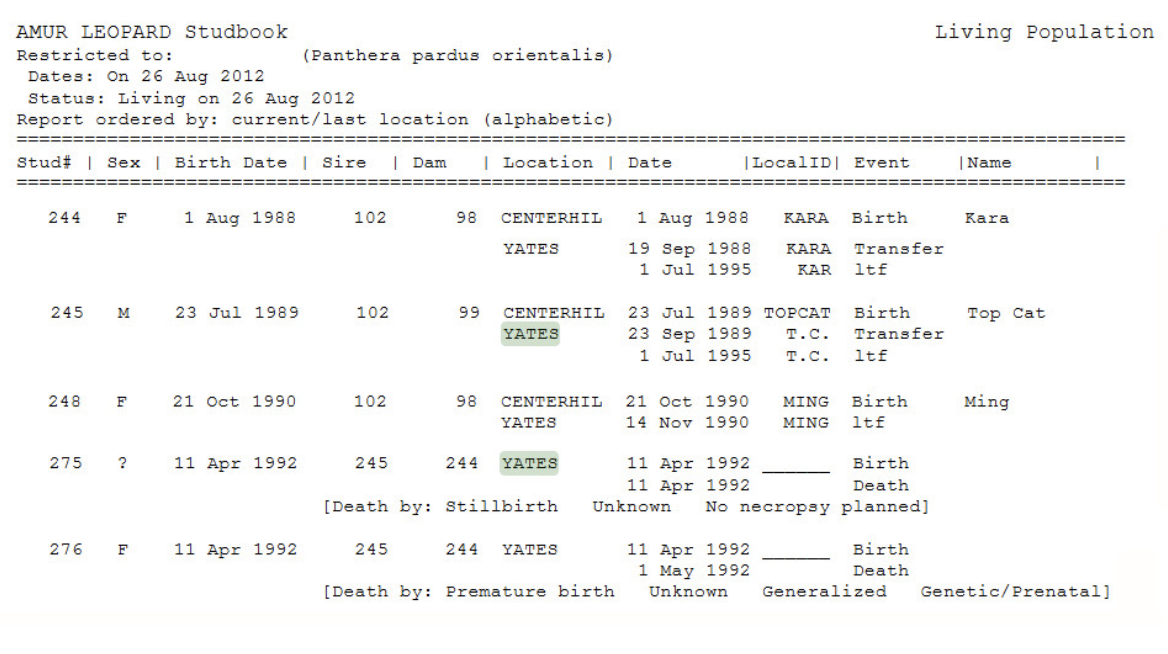
Yate’s records from the studbook, amended for easier viewing.
These records show that in 1988, Yates purchased a one month old female Amur leopard cub named Kara from Baudy, followed by a two month old male named “Top Cat” in 1989 and another cub, “Ming,” in 1990. In 1992, Yates attempted to breed Top Cat and Kara with each other despite the fact that both cats shared the same sire, and that their mothers were littermates produced by a previous breeding of siblings. The unnatural pairing resulted in two stillborn cubs, with “genetic [defect]” listed as the likely cause of death. By 1995, all of Yates’ leopards were classified as “lost to follow up” without ever contributing anything to conservation efforts.
Timeline of USDA Violations and Animal Welfare Issues
February 23, 2019: Wildlife Rescue and Rehabilitation rented out a tiger in a tiny cage to be used as a prop to promote Bengal brand insecticide at the Orgill Dealer’s Market trade show in Orlando, then lied to the public about the tiger’s origins.
The handler who was with the tiger reportedly told a concerned patron that the animal “has over 10 acres at the wildlife rescue she runs,” that he “was rescued from a guy that had him in a 20X20 cage and he was starving when they got him,” and that “[the rescue] has only had him for about 3 years.” All of these claims are completely false.
This tiger can be identified by his stripes as “Ty,” a tiger who was born in Vernon Yates’ backyard 18 years ago and has been pimped out for party rentals ever since. And none of Yates’ animals ever have access to 10 acres of land because his entire property is only 2.5 acres.
While on display, the tiger was photographed sticking his paws between through the slats of the cage, and there was little, if any, barrier between the cage and the public.
February 18 2019: Local news footage filmed on Yates’ property shows tigers housed in rows of concrete-floored chain-link pens, an alligator kept in a filthy concrete pool with green water, and a social baboon housed alone in a cage in the front yard.
June 21, 2018: Vernon Yates was filmed transporting a tiger on the back of a flatbed truck without any barrier to keep the public from reaching in and losing an arm to the adult tiger. The FWC refused to pursue it, despite two witnesses and film documenting the violation.
April 17, 2018: A neighbor films one of the tigers in Yates’ backyard walking with an obvious limp.
March 15 2018: WFLA camera crews visiting Yates’ property film a baboon housed alone and engaging in stereotypical behavior, and four black bears crammed into a single small concrete pen.
Oct 9, 2017: Vernon Yates brings a tiger and a baby bobcat to the Cypress Palms Senior Center and displays them in tiny cages to “educate” the residents. The only barrier separating the tiger cage from the onlookers posing for photos is a thin rope tied to some traffic cones.
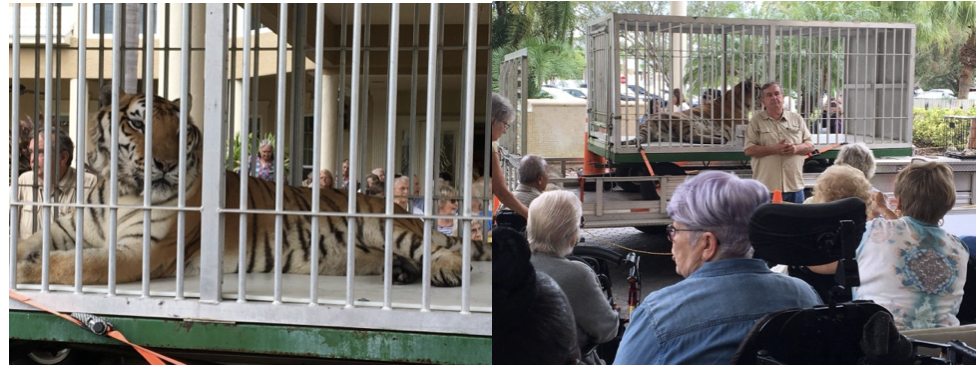
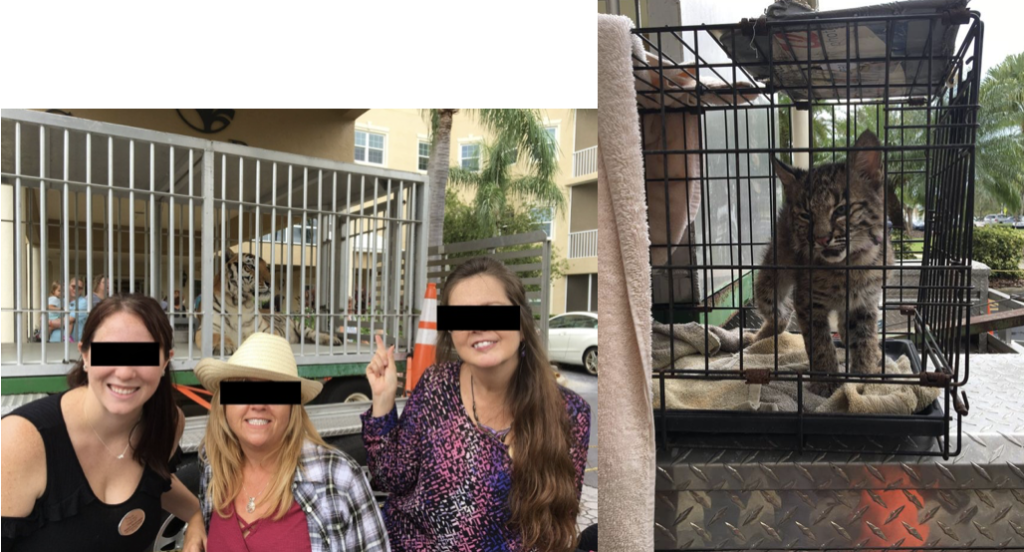
June 7, 2017: A neighbor films a black bear confined to a concrete cage in Yates’ backyard repeatedly head-swinging and swaying back and forth. This stereotypical behavior is a sign of psychological distress and poor welfare in captive bears living in barren environments.
Spring/Summer 2017: Vernon Yates exhibits “Ty” the tiger at a series of local car shows. A member of the public is photographed feeding the tiger, sticking her hands inside the cage, leaning up against the cage with no barrier between her and the tiger, and even going inside the cage while the tiger was asleep in order to take pictures in direct violation of state and federal law. Other photographs show that the tiger was suffering from hair loss and sores on his elbow due to the repeated trauma of lying on concrete.
September 2016: A member of the public is photographed petting and posing next to a 600-pound Siberian tiger in Yates’ backyard during an illegal photo shoot.
June 19, 2013: Vernon Yates refuses to assist in the court-ordered transfer of two tigers and a leopard from his facility to Susan Pierce after courts ruled that he was not entitled to $50,000 in compensation. Pierce alleged that Yates went out of his way to sabotage the transfer by banning her staff from entering his property and by sedating the cats with an unknown drug which he refused to disclose the name of.
May 23, 2013: A 17-year-old tiger named Ty underwent surgery to remove a four-pound gastric obstruction. Yates told reporters that the tiger had stopped eating weeks earlier and had lost roughly 100 pounds before the procedure was done. Before the surgery, Yates was filmed carelessly opening the unsedated tiger’s cage in the veterinarian’s parking lot while staff and reporters gathered, then climbing into the cage to inject the sedative while the cage door remained open. According to a local news report, “Ty is the son of Hobbes, another tiger Yates had until it died. Ty, 17-years-old, is one of 17 other tigers at the facility and Yates’ most famous cat. Ty was in infomercials and has been photographed numerous times… …Yates used to take Ty out on ATVs and boat rides.”
September 2012: Vernon Yates rents out a cage containing two live tigers to the AJA Channelside nightclub for its “Where The Wild Things Are” party. The tigers were subjected to loud music, camera flashes, and harassment by drunken patrons and displayed clear signs of distress such as pacing and snarling.
June 19, 2012: Yates refused to return an escaped pet parrot to her owner until he was paid over $500 in “storage fees”. According to Fox 13 News, a neighbor found “Lucy” and called Wildlife Rescue & Rehabilitation to pick her up. Yates then answered a lost pet ad placed by Lucy’s owner, saying that he had the parrot but he wanted his fee first. “He said ‘You can be here by 5 o’clock and you can have $400.’” recounted the owner. “And I said ‘What? $400 for what?’”
“We charge $100 initially for picking it up. We charge $25 a day for every day we have it,” he said.
The parrot’s owner told the Tampa Bay Times Yates was holding her bird “for ransom.” Yates replied: “I want her to have her bird back. All she has to do is pay the money.”
Nov 10, 2011: A complaint was filed with USDA and the Florida Wildlife Commission based on Vernon Yates’ flagrant disregard for the law that requires a barrier between the public and tigers:
“On Saturday, November 5th, 2011 around 2:30pm on Park Blvd. in Pinellas County (close to Starkey and Seminole Blvds), my son and I were driving west and spotted something odd being pulled by a truck. As we approached the vehicle, we were amazed to see two large tigers in a single cage. The cage was on a flat, open trailer. The two cats were moving around on a bed of what appeared to be a fresh bed of hay. The cage had bars so, the tigers were able to stretch their legs through. The trailer was pulled by a very nice, white pick up truck. On the door read “Shelter for Wild Life and Exotic Pets and Rehabilitation” with a tag number on the trailer: X76863.”
October 2011: FWC records show that Yates failed to post the $10,000 bond required under Florida law for all owners of dangerous exotic animals.
2010: Vernon Yates sells two white tiger cubs to Dade City’s Wild Things for them to exploit in cruel “tiger cub swims.” One of the cubs dies within a year. Dade City’s Wild Things has since been prohibited from owning tigers due to rampant animal abuse and fraud.
April 20, 2009: The Tampa Bay Times reported that two tiger cubs were born at Wildlife Rescue and Rehabilitation with cleft palates so severe that they were missing the roof of their mouths. Both cubs died within eight weeks due to genetic birth defects.
November 2009: National Geographic magazine featured Yates in an article about irresponsible tiger “rescues,” writing:
“Vernon Yates took one of his 18 tigers to a party – his fee varies by event. “You can’t trust tigers,” a guest said. To prove her wrong, he told her he’d stick his head in the animal’s jaws and tug its tongue for $20. She had to pay up.” [Yates] makes no apologies for his controversial style. He brings leashed cubs to schools for educational talks and takes his tigers on truck rides.”
February 16, 2009: In an interview with The St. Petersburg Times, Vernon Yates talked about his appearances at schools and fairs and even “some spots in movies, usually with a tiger.” Yates told the reporter that he “once got paid $1,000 to stand with a tiger outside a Halloween party.”
 Yates also said that his biggest annoyance was “getting hassled by animal-rights people or neighbors who get freaked out.” He compared animals living in the wild to people living on the streets and complained that “society isn’t fair to exotic animals. If a woman gets kicked by a horse, who cares? But if a woman gets scratched by a tiger, all the news media will be here.”
Yates also said that his biggest annoyance was “getting hassled by animal-rights people or neighbors who get freaked out.” He compared animals living in the wild to people living on the streets and complained that “society isn’t fair to exotic animals. If a woman gets kicked by a horse, who cares? But if a woman gets scratched by a tiger, all the news media will be here.”
November 12, 2007: Five severely emaciated tigers and a lion were seized from a private home by the FWC and transferred to Vernon Yates. A CNN camera crew reporting on the confiscation filmed Yates yelling at the obviously stressed cats who were being kept, two to a cage, in circus wagons. One tiger appeared to have lost half of her tail and the cats were roaring at each other and baring their teeth aggressively. If Yates cannot control his temper in front of a CNN camera crew, it is depressing to think how he must behave when no one is looking, which is most of the time.
Nov 11, 2007: The St. Petersburg Times reported that “Yates gets occasional complaints from parents at Starkey Elementary, a block away.” “I’ve always had a little bit of concern,” said Principal Ken Mackenzie. “You just never know when something could occur. It’s a very populated neighborhood.”
October 2005: In violation of the Animal Welfare Act, Vernon Yates is photographed allowing members of the public to pet a large juvenile tiger he was walking on a leash at the Florida Outdoor Adventures show.
Summer 2005: Wildlife Rescue and Rehabilitation exhibits multiple caged big cats in the parking lot of a Petland store on a 95-degree day.
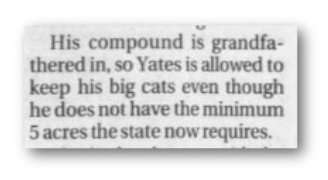 February 27, 2005:
February 27, 2005:
- The Tampa Tribune reported on an altercation between Vernon Yates and Pinellas County Commissioner Ken Welch. Welch saw Yates driving an adult tiger in the back of a pickup truck and called him to ask about the cat. Later, “with county commissioners set to act on setback requirements for outdoor wildlife cages, Yates showed up and angrily confronted Welch about the phone call and comments the commissioner made,” demanding an apology for himself and his tiger. Pinellas animal services director Kenny Mitchell told commissioners that he saw children coming up to Yates‘ truck at Bardmoor Shopping Center in Seminole and putting their hands on the tiger’s cage, a charge denied by Yates.
- In an unrelated article, the Tribune reported that “Yates is allowed to keep his big cats even though he does not have the minimum 5 acres the state now requires” because his property is grandfathered in and exempt from recent regulations.
March 2, 2004: Wildlife Rescue and Rehabilitation was cited by the USDA for multiple Animal Welfare Act violations:
-
- Wooden resting platforms in an enclosure housing six cougars were weathered and deteriorating. A platform in a leopard enclosure was weathered and the metal pole holding it up was rusted and “not secure.”
- Water receptacles for the black bears had algae growth on the bottom of the container, and the drinking water in two separate tiger enclosures contained algae growth as well as “large clumps of algae floating on the surface of the water.”
 November 26, 2003: The Tampa Bay Times reported that two tigers and two black leopards from Vernon Yates were displayed in small cages on the back of a truck at Douglas L. Jamerson Jr. Elementary School. The animals had been rented by the school PTA as an “educational” reward for the children.
November 26, 2003: The Tampa Bay Times reported that two tigers and two black leopards from Vernon Yates were displayed in small cages on the back of a truck at Douglas L. Jamerson Jr. Elementary School. The animals had been rented by the school PTA as an “educational” reward for the children.
Nov. 12, 2002:
- The USDA cited Yates after finding that there were “no medical records documenting any veterinary treatment” for a tigress which had chronically licked the end of her tail red and raw. Repetitive licking and tail-sucking is a sign of severe psychological distress in captive tigers and is often seen when cats are kept in small barren cages. During the next inspection, Yates was cited again for failing to keep medical records for this tiger.
- Several metal bolts securing the chain-link fencing on animal enclosures were found to be rusted, and the metal frame of an enclosure containing 4 leopards was noted to have “an advanced state of deteriorating rust [making them] structurally unsound, and may not support the weight and or force that these species of cats might apply.”
- There were no acquisition records for five brown bears.
September 23, 2002: According to local media reports, an 11 year old female tiger named Song broke all four of her canine teeth while attempting to chew through a chain link fence. The broken teeth became painfully abscessed, leaving the tiger unable to eat and “rapidly losing weight” before Yates contacted a local dentist to treat the animal.
May 27, 2002: Hillsborough County officials confiscate a rooster from Vernon Yates and accuse him of animal neglect after the bird was left in a trap for over a month as live bait for a panther.
January 7, 2002: Vernon Yates was cited by the USDA for failing to provide five tigers and three lions with adequate shade and shelter from inclement weather, and for housing three tigers in a temporary enclosure in his front yard without an 8 foot perimeter fence to separate the public from the tigers. Yates told inspectors that he was working in his garage, but “was not visibly present supervising the animals” when they arrived.
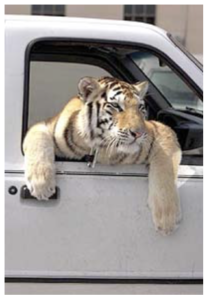 September 7, 2001: The St. Petersburg Times reported that Vernon Yates showed up to a snake removal call at an auto shop with a 200-pound tiger named “Nen Nen” hanging out of the window of his pickup truck.
September 7, 2001: The St. Petersburg Times reported that Vernon Yates showed up to a snake removal call at an auto shop with a 200-pound tiger named “Nen Nen” hanging out of the window of his pickup truck.
August 15, 2000: A USDA inspector noted that three cougars being housed by Yates belonged to another private owner and that there were no onsite records for these cats.
 October 25, 1998: The Tampa Tribune reported that nine animals at Wildlife Rescue and Rehabilitation died within a 10-day period. A Russian brown bear named Rex, three black leopards, two bobcats and three caimans likely died after being fed “a batch of bad meat,” according to Yates’ veterinarian.
October 25, 1998: The Tampa Tribune reported that nine animals at Wildlife Rescue and Rehabilitation died within a 10-day period. A Russian brown bear named Rex, three black leopards, two bobcats and three caimans likely died after being fed “a batch of bad meat,” according to Yates’ veterinarian.
The deaths were not recorded in Yates’ USDA inspection reports.

February 2, 1997: The Tampa Bay Times published an editorial calling for “common sense” to prevail in a zoning case between Vernon Yates and Pinellas County zoning officials. The editorial states that “Yates has gone too far with his “pet” collection… …Common sense says jungle cats and other wild and dangerous animals with special needs don’t belong in a densely populated residential area like mid-Pinellas County. Ethical arguments could be made that lions and tigers don’t belong in small cages under any conditions.”
Summer 1996: After many complaints about noise, odor, and safety concerns, Pinellas County charged Wildlife Rescue and Rehabilitation and Vernon Yates with four zoning citations for raising livestock without getting the proper permit from the county, violating home-based business rules, and not having a 25-foot setback between his pens and his side property line.
Defiant, Yates claimed that he was “entitled to have my pets here” and that he was “allowed to house more than 50 animals — many endangered species from Asia and Africa — in cages and pens scattered around [his] yard. “I could put 9,000 tigers on this piece of property, and no one could do anything about it,” he told The Times.
A county judge later dropped the zoning complaints, ruling that the state of Florida has the sole power to regulate exotic animals.
October 26, 1995: The Tampa Bay Times reported that Yates had been living under a $500 a day fine against his Tarpon Springs home after courts ruled him in violation of a county ordinance that deals with keeping and maintaining wild animals in a residential district. The charges were dropped after Yates moved to the Seminole property where Wildlife Rescue and Rehabilitation’s facilities are based. Yates’ former wife told the press that in Seminole, they could “walk the tiger cub and leopards and don’t have complaining neighbors.”
May 26, 1995: The Tampa Bay Times published an article on Vernon Yates’ “pet” snow leopards, Snowball and Sedrick. The snow leopards lived inside Yates’ suburban home in Tarpon Woods, along with a tiger cub and Yates’ three children.
Yates told the reporter that his leopards “live together in a 10- by 15-foot cage on a back patio that is screened with tinted vinyl windows. They are never loose or unsupervised in the yard and they rarely go out.” Snowball was described as “sickly” and with no teeth, while Sedrick was declawed.
The article also mentioned that Yates “now spends most of his time shepherding animals to theme parks and the sets of TV shows and movies.”
 March 18, 1995: The Tampa Bay Times published a photo of Yates walking a 2-year old, declawed tiger named Song on a leash at a Largo nursing home. The tiger was “playfully crouching in the attack position during the visit.” Declawing big cats was banned by the USDA in 2006 because it “can cause considerable pain and discomfort to the animal and may result in chronic health problems.”
March 18, 1995: The Tampa Bay Times published a photo of Yates walking a 2-year old, declawed tiger named Song on a leash at a Largo nursing home. The tiger was “playfully crouching in the attack position during the visit.” Declawing big cats was banned by the USDA in 2006 because it “can cause considerable pain and discomfort to the animal and may result in chronic health problems.”
April 6, 1993: Yates told the Tampa Bay Times that “fees from using the animals, especially the big cats, for advertisements or promotions help keep the shelter afloat.”
April 23, 1992: Federal inspectors cited Wildlife Rescue and Rehabilitation for multiple serious violations of the Animal Welfare Act. Most of these violations were listed as “Category 3,” meaning that they had remained uncorrected since previous inspections.
-
- There was “no evidence of veterinary care for injured or sick rehab animals” or evidence of criteria for the decision to euthanize rehab animals.
- An animal named Casey was wounded, but had “no evidence of veterinary care.”
- A lethargic opossum with an apparent injury to its head was found unattended in the back of a pickup truck parked on the street.
- A capuchin cage was dirty with a buildup of feces.
- A baby bear was being kept in a dog crate which was too small to allow for “normal postural adjustments.”
- Water, urine, and feces were pooling on the floors of the big cat enclosures; one of which contained 5 panthers. There were accumulations of feces on the floor of the tiger enclosure and along a walkway.
- Two domestic cats were being housed with a bobcat.
- A macaque and capuchin monkey were each housed alone in individual cages; the capuchin was noted to be a “self mutilator.”
- Resting boards in the bobcat enclosures were “rough, splintered, and in general disrepair.”
- Acquisition records of a margay and a bear were not completed.
April 11, 1992: Two Amur leopard cubs were stillborn at Yates’ facility. The cubs were the result of a breeding attempt between genetic siblings who were purchased from a private breeding mill. Records indicate “genetic [defect]” as the likely cause of the cubs’ death.
December 30, 1991: The Tampa Bay Times reported that Vernon Yates refused to return an escaped ground hornbill to its owners at Sunken Gardens until he was paid $500. Yates was accused of snatching the bird out of the hands of a Sunken Gardens employee and driving off so fast that the bird “bounced all over the place” in its cage.
January 11, 1991: Wildlife Rescue and Rehabilitation displays caged tigers, leopards, and a panther at the St. Petersburg Pier as a way to generate “donations.” The Tampa Bay Times reported that “most of [the cats] came from the Rare Feline Breeders in Bushnell.”
January 3, 1991: Vernon Yates defends the use of tigers by the Ringling Bros. circus, claiming that tigers “enjoy traveling” and that they’re treated better in the circus than by AZA zoos.
Yates angrily refuted claims that he was exploiting his tigers to make money, stating that “one of my biggest aggravations is the jerk who stands 20 feet back from the cage and says what a shame it is that my animals are in cages.”
November 26, 1990: The St. Petersburg Times reported that Vernon Yates “briefly lost his [rehabilitator’s] license battling a state agency over a bobcat.” The same article also mentioned that Yates “exhibits his animals to supplement his income. For instance, taking seven tigers to Leesburg to promote the opening of an office-supply store will net him an $800 fee.”
November 9, 1989: According to the Tampa Tribune, Vernon Yates received over 1,500 responses after offering to give away eight rescued cougars. One inquiry was from an antique shop owner who “wanted to take all the cats [and] have them killed and mounted to sell in her store.”
October 28, 1988: The Tampa Bay Times reported that Vernon Yates was admitted to the emergency room “in very serious condition” after being bitten by a cougar. The bite, from a six week old cub, became infected and led to sepsis.
October 19, 1982: In a Tampa Bay Times interview, Vernon Yates admits that “although he has been bitten [by wildlife] hundreds of times… …he seldom reports any bites to the health department, which monitors rabies.” “Plenty of vets have called me a fool, and me and the health department have gone tooth to jaw about it plenty of times,” Yates said.
The vet for Vernon Yates is Dr. Don Woodman of Safety Harbor.
If you see people using animals this way, please take photos, videos and document when, where and what the conditions were. Send it to us at MakeADifference@BigCatRescue.org and we will use it to try and get laws passed so that animals cannot be abused this way. Contents on this page are our opinions and beliefs based upon extensive research.


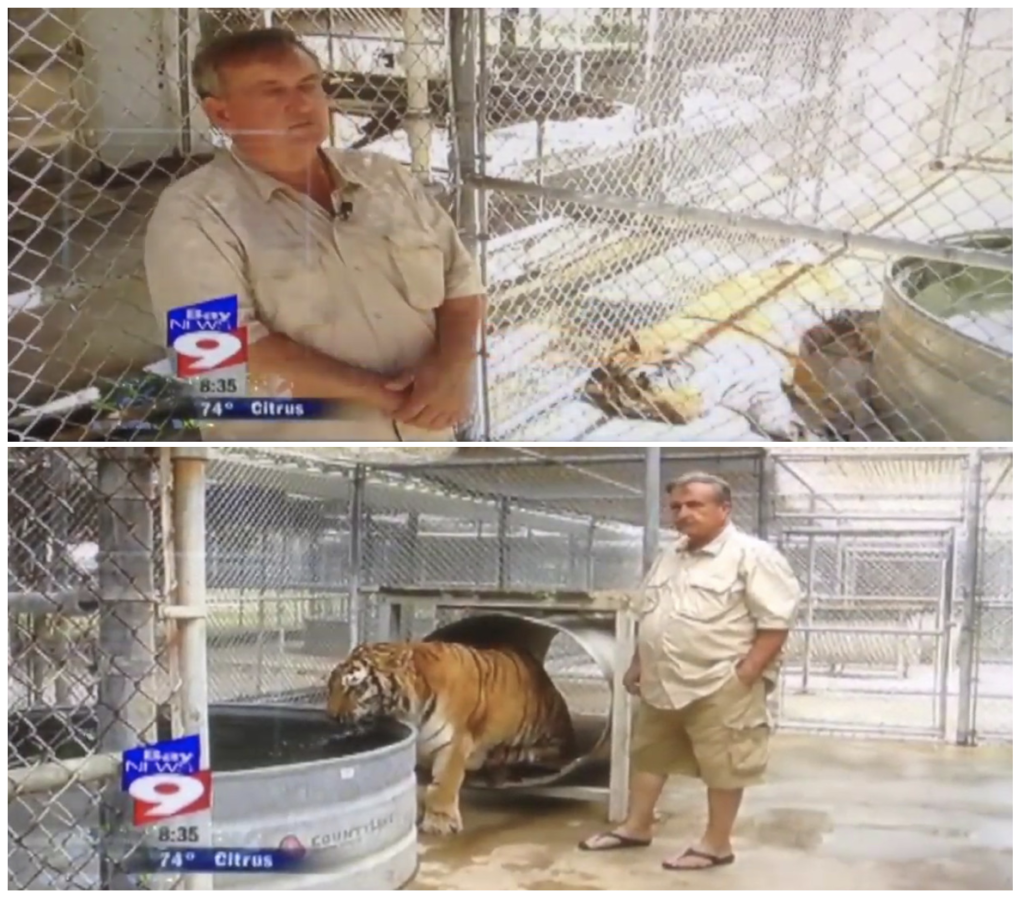


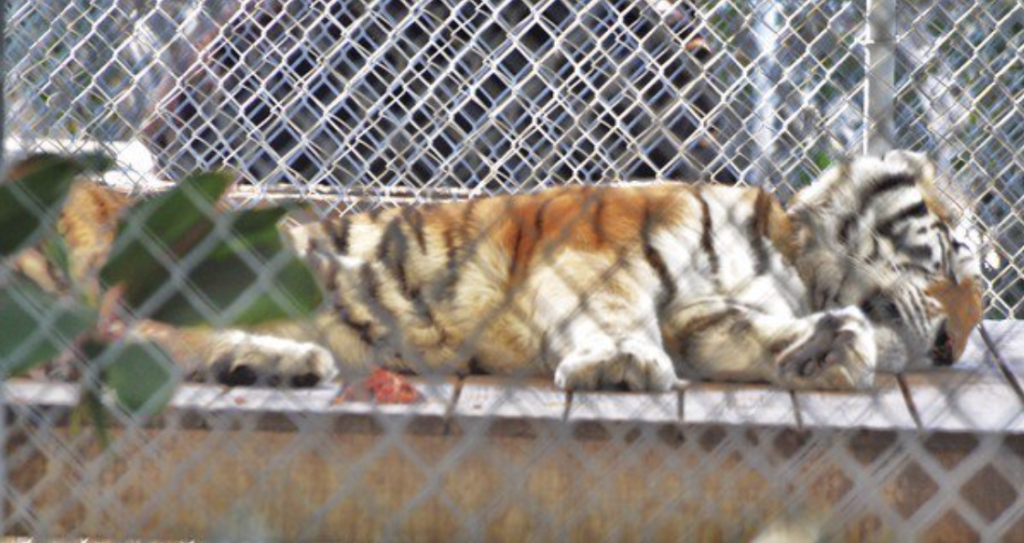

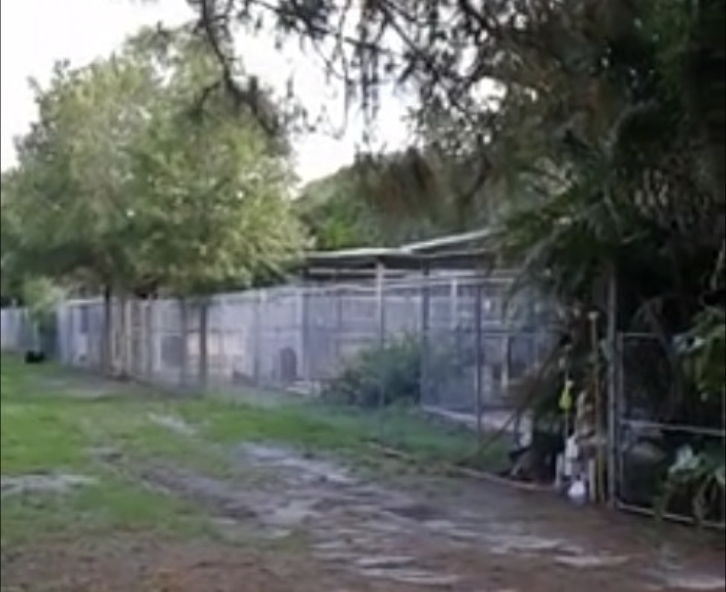


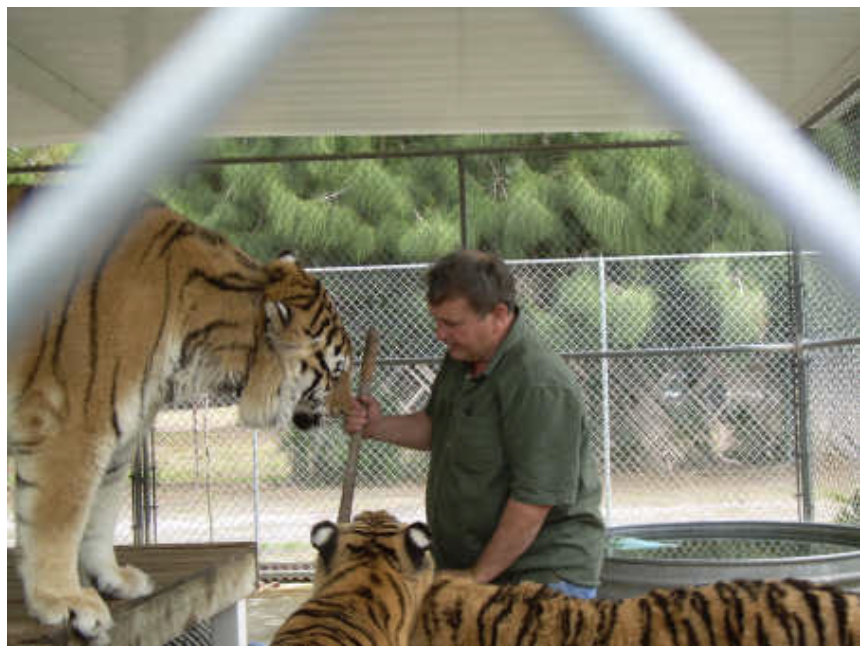
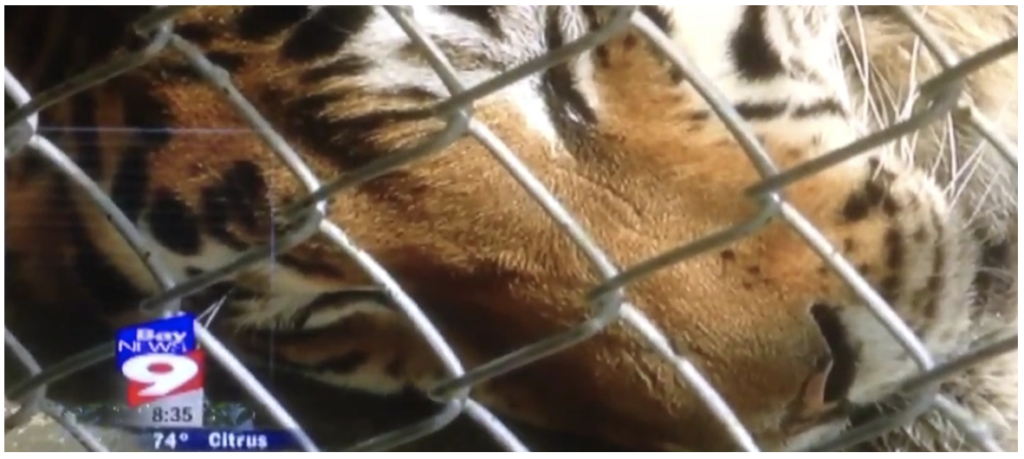
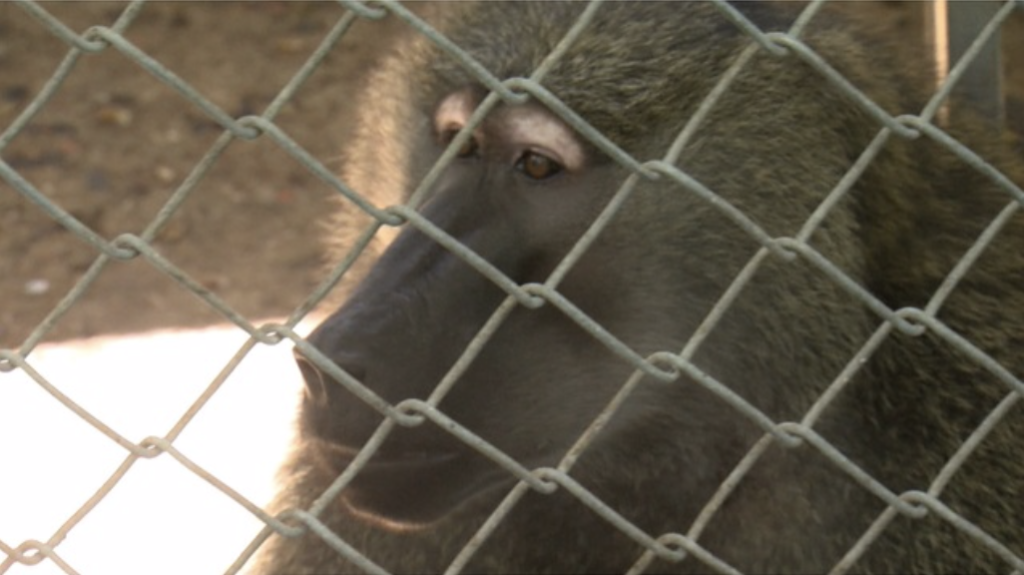
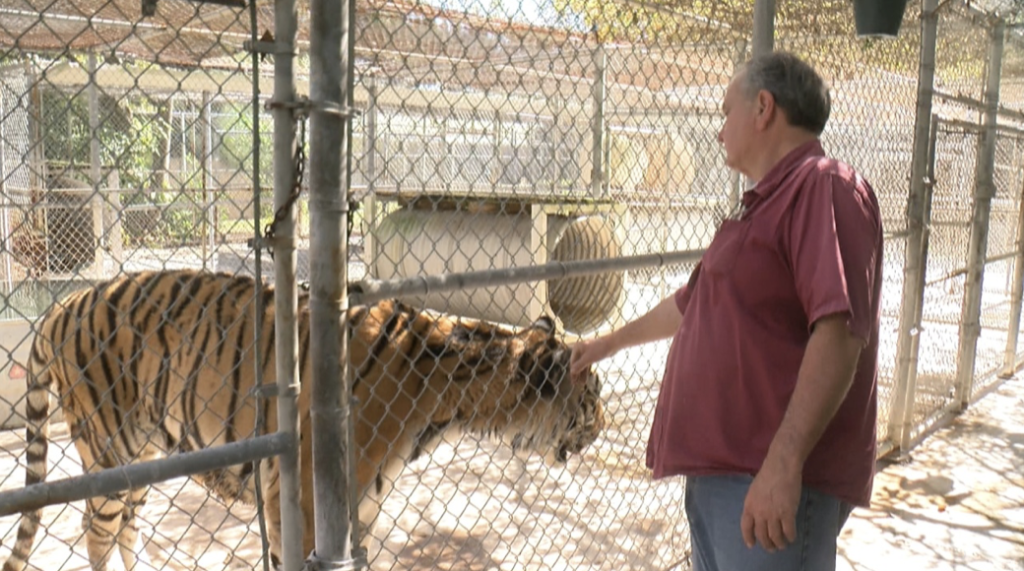
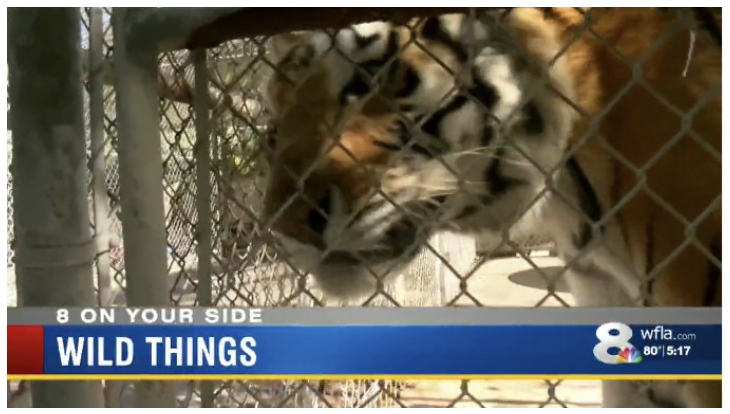
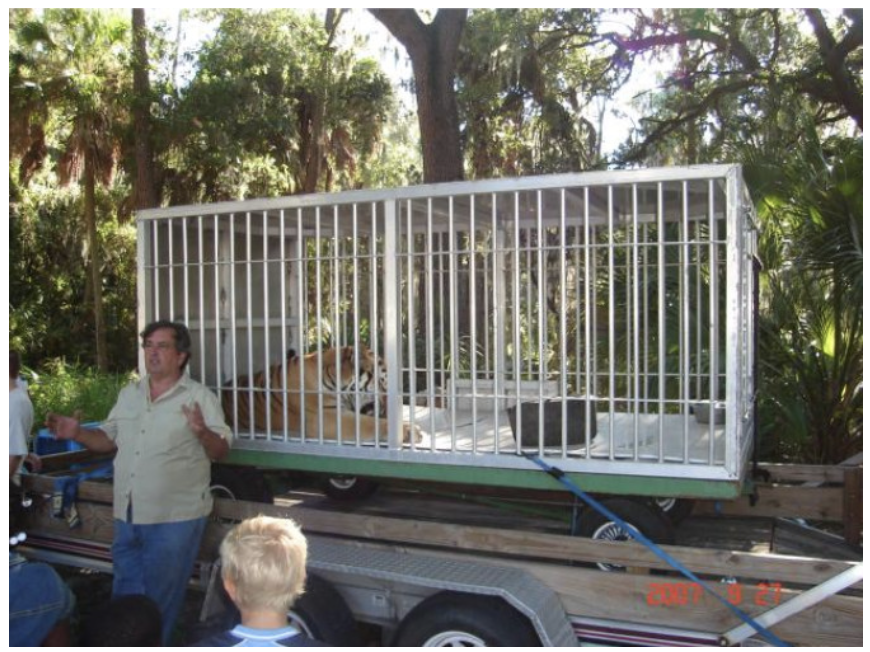

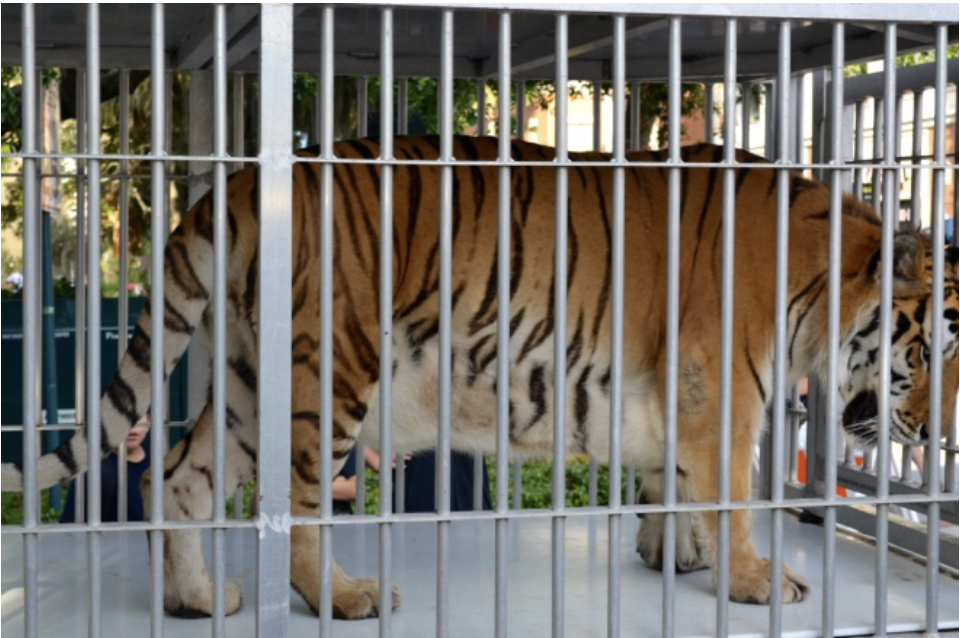
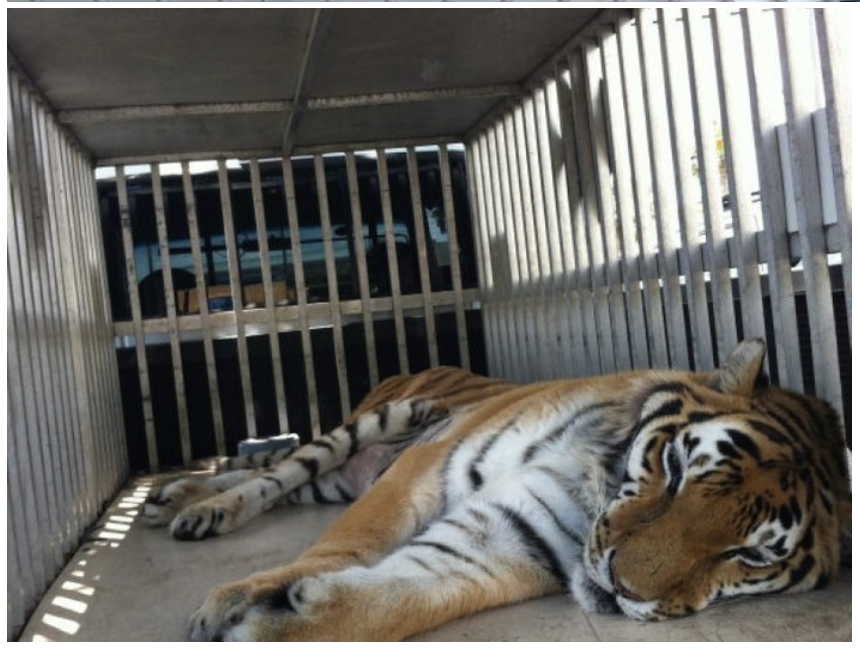
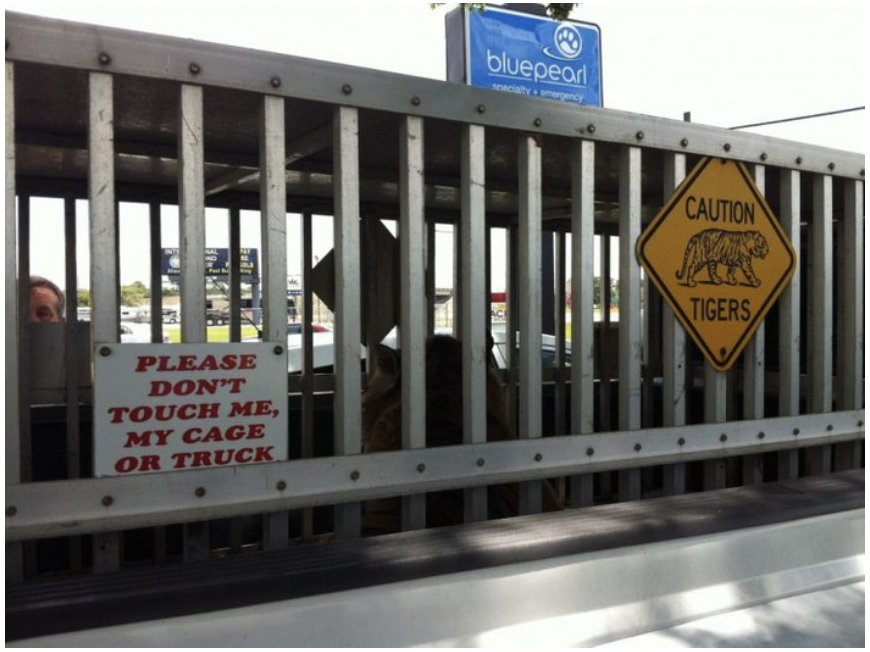
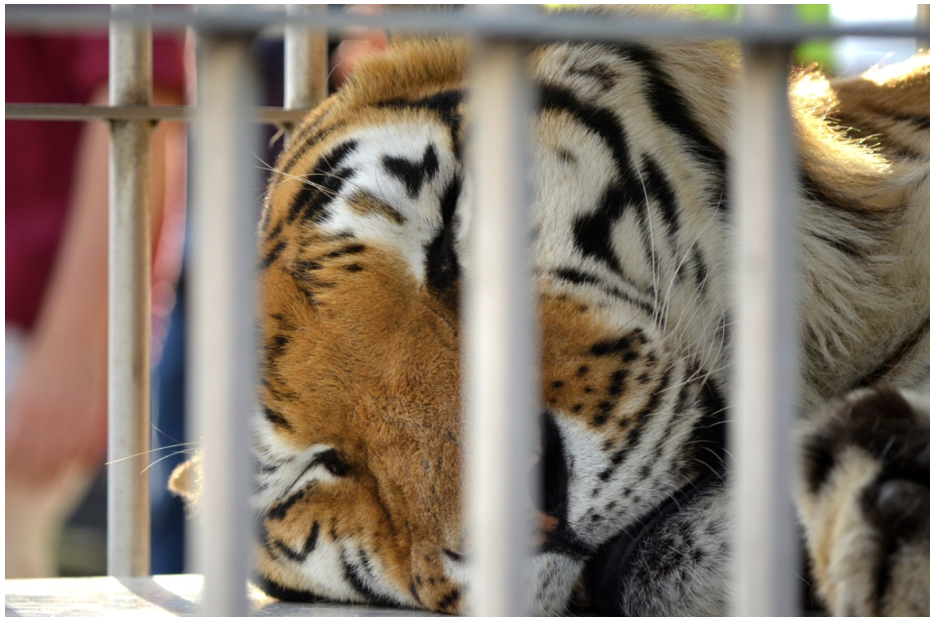

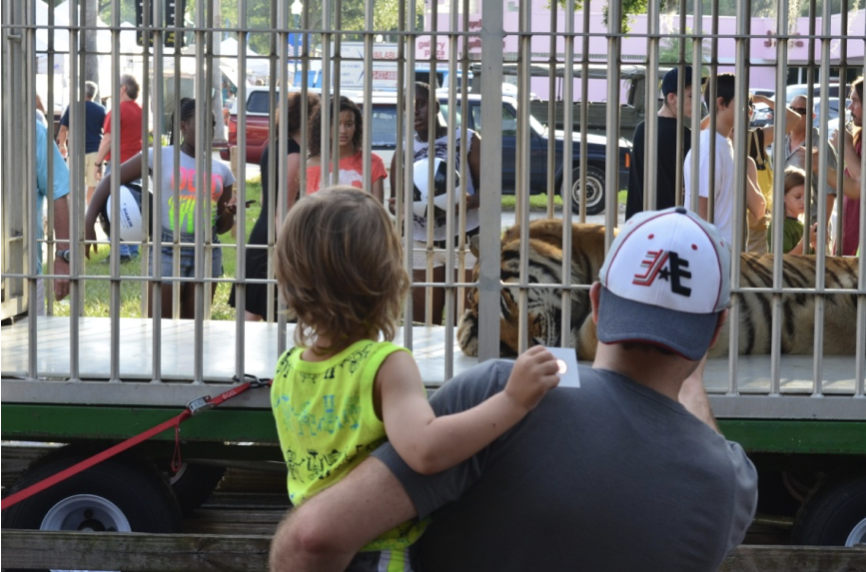


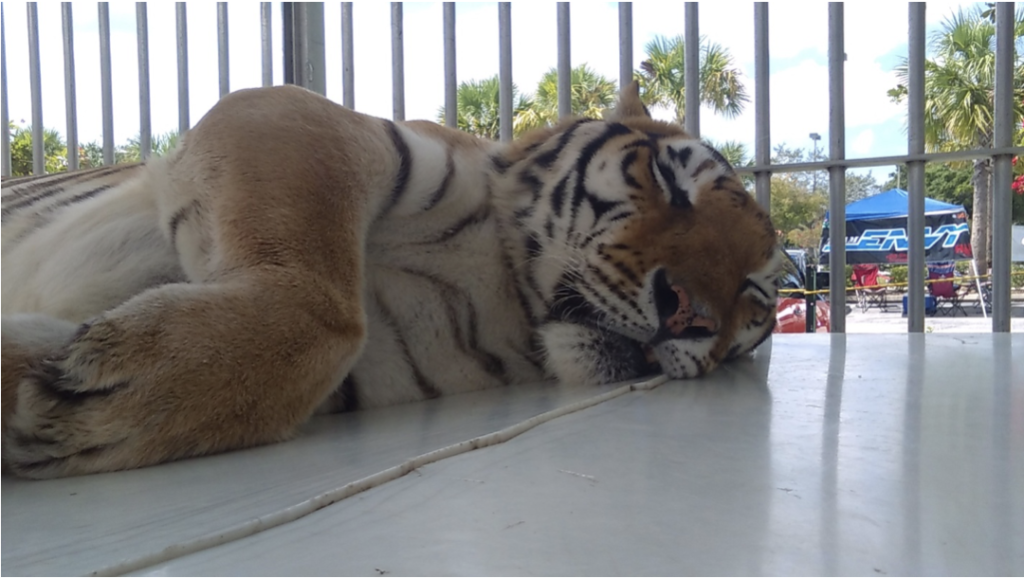

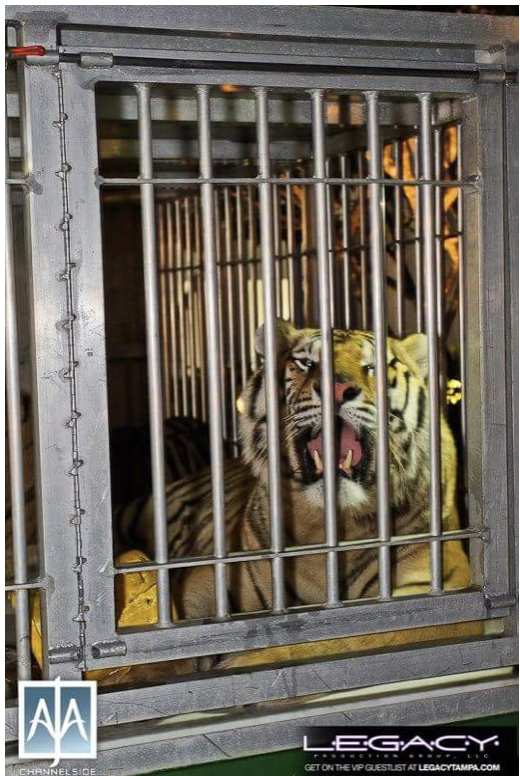

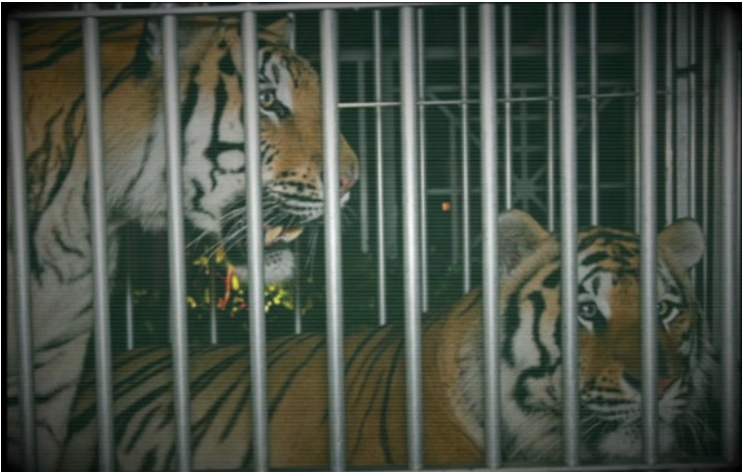
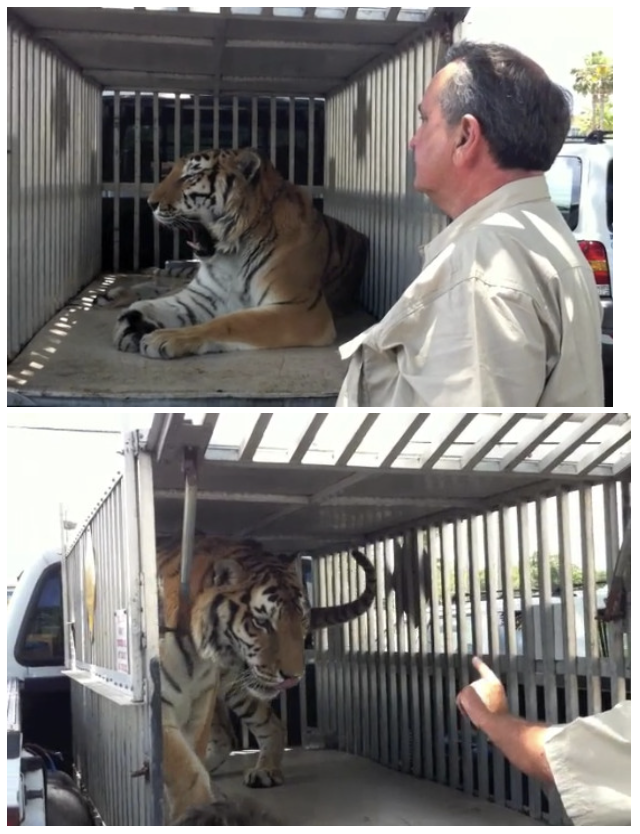

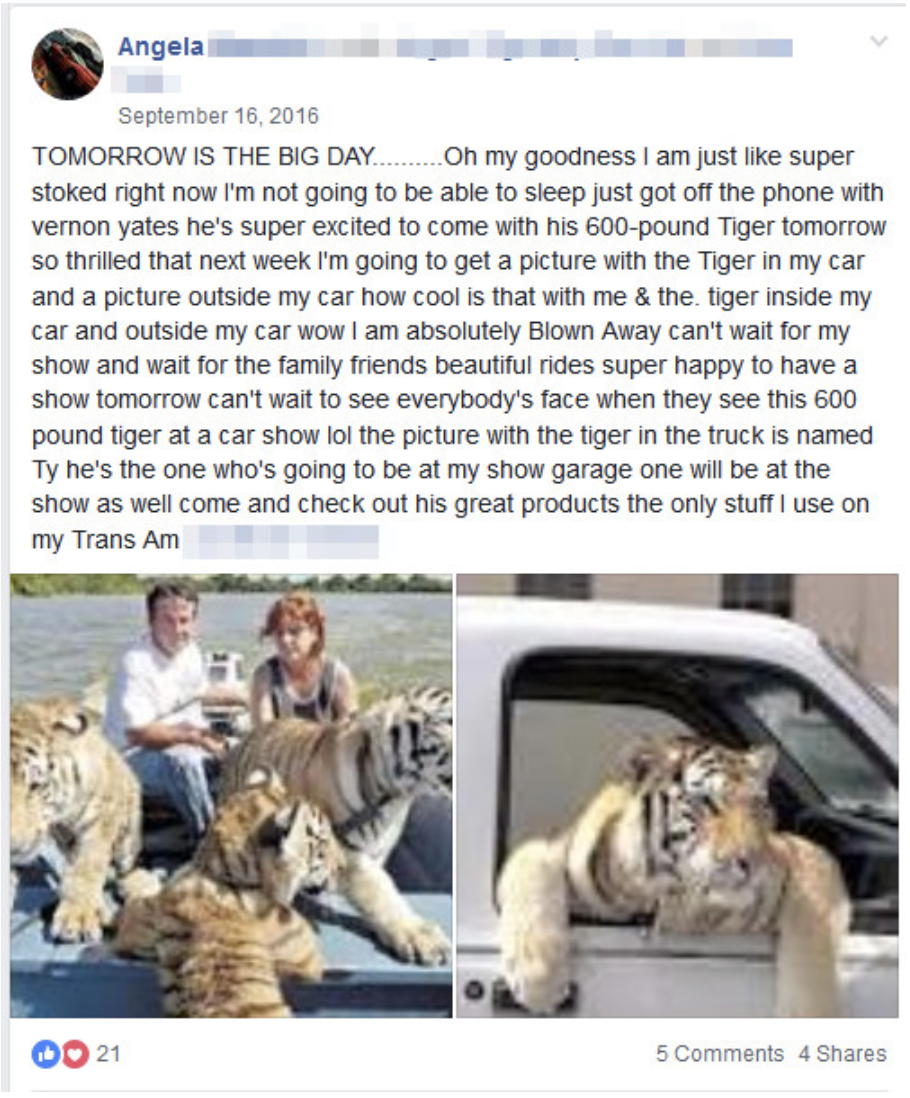



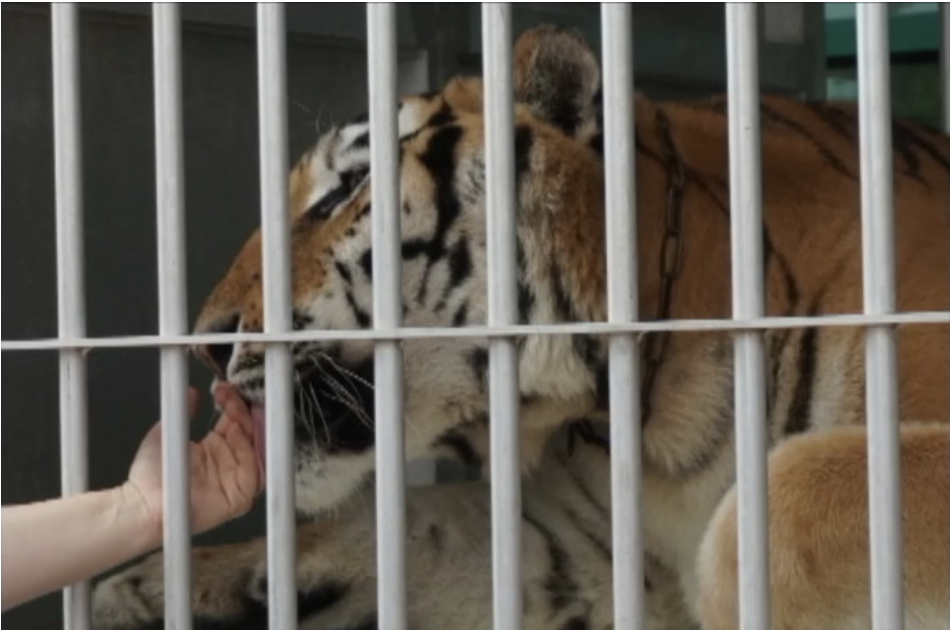
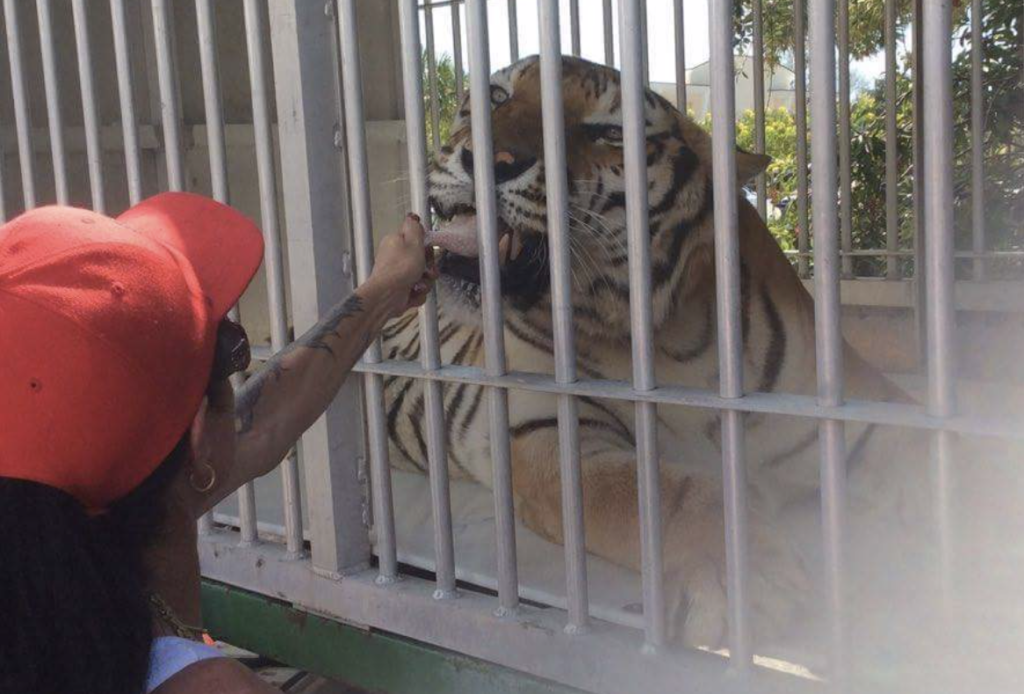
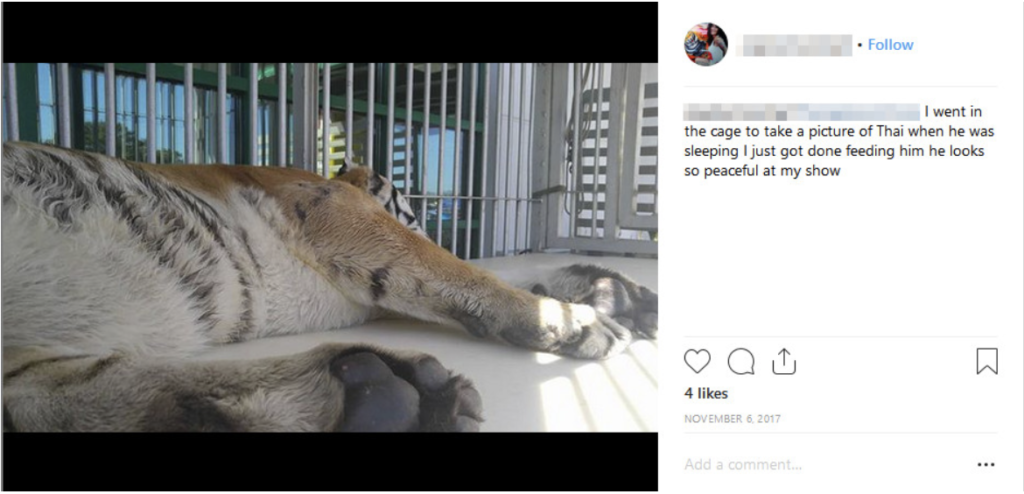
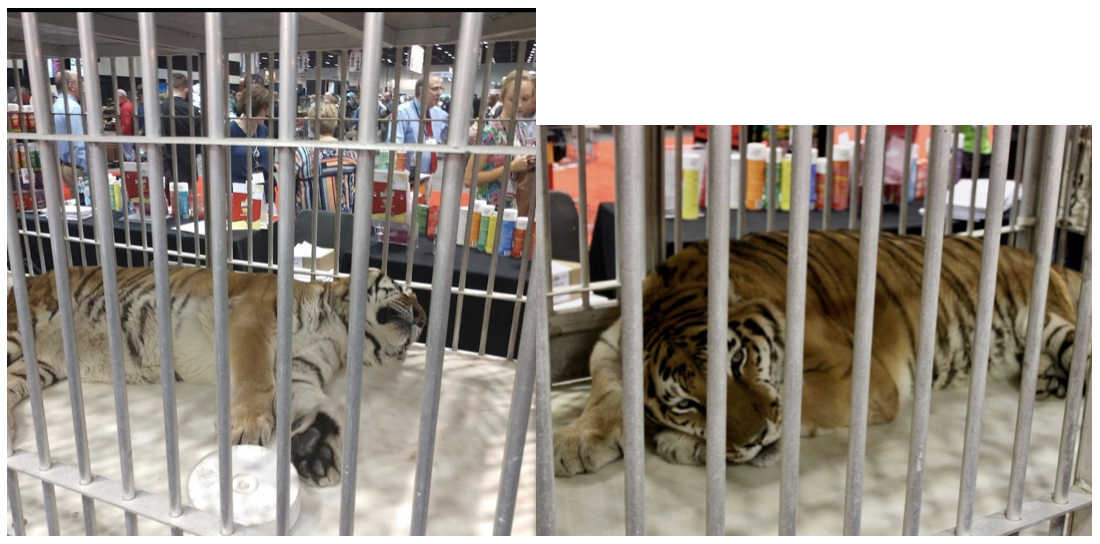
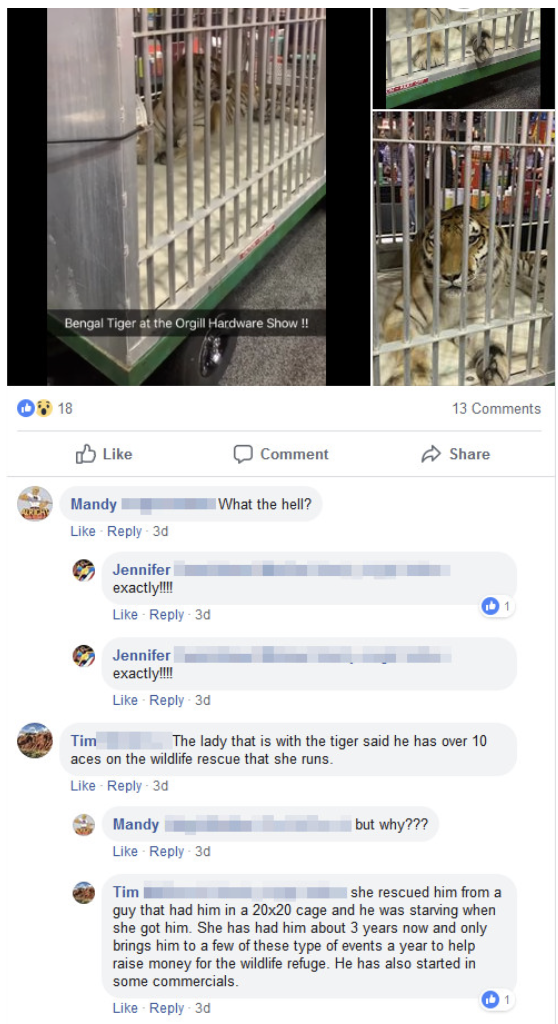
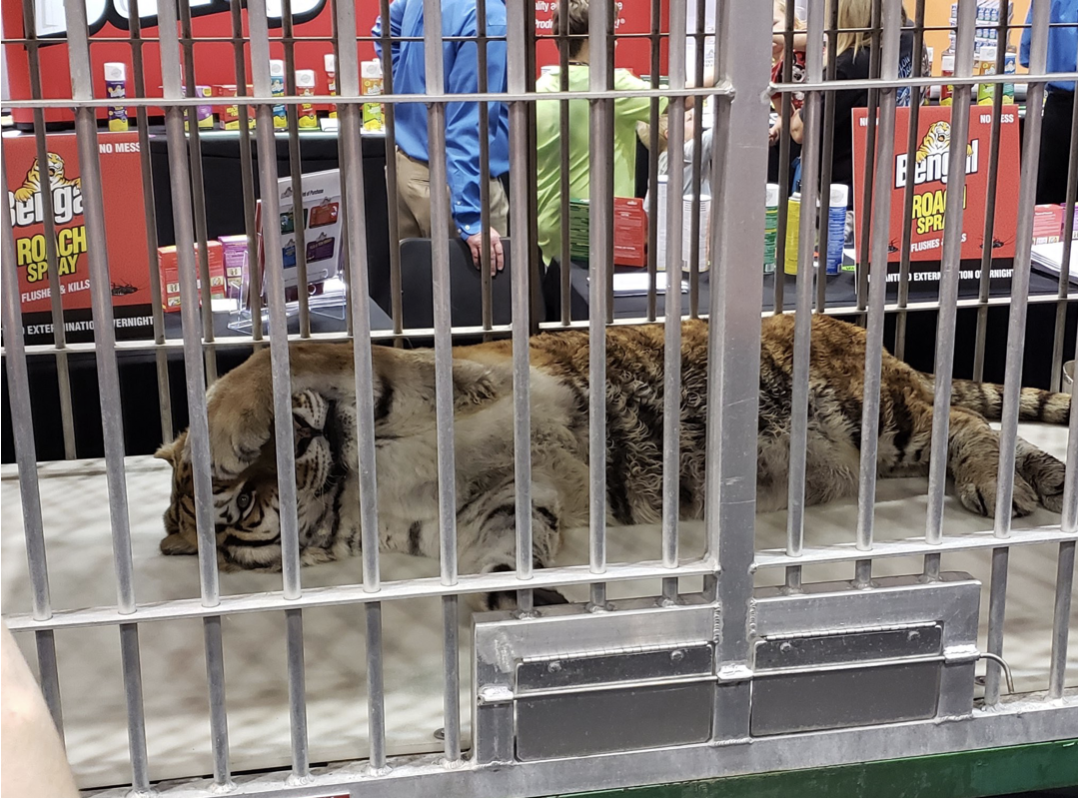

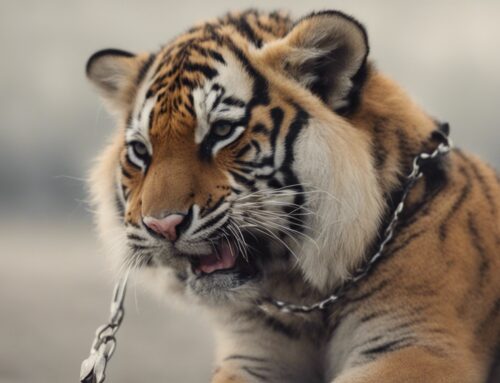

[…] https://911animalabuse.com/wildlife-rescue-and-rehab/ […]
instinct to scratch. it helps them keep
their claws sharp and their muscles toned. typically, cats are not very picky about the surface they use for scratching and very often your sofa or carpet turns to be very appropriate. the purchase of a scratching post is probably the